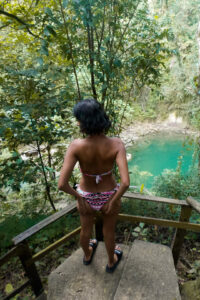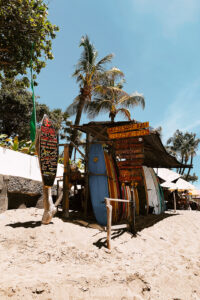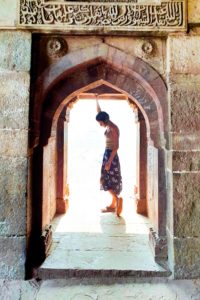I used to call Los Angeles home for many reasons but the ability to travel to some of the most gorgeous west coast national parks was one of my favorites. Some of the most gorgeous national parks in the country are in and around California which makes road trips from Los Angeles a lot of fun.
The west coast has a wide range of eco-systems ranging from barren deserts in Death Valley National Park to ice covered mountains in Yosemite. The west coast national parks encompass all of these amazing biospheres that you can experience all within driving distance from Los Angeles, San Diego, San Francisco, Las Vegas and Seattle.
Top 20 West Coast Park
- Joshua Tree
- Channel Islands
- Death Valley
- Sequoia and Kings Canyon
- Pinnacles
- Yosemite
- Point Reyes
- Zion
- Saguaro
- Grand Canyon
- Glacier
- North Cascades
- Arches
- Canyonlands
- Bryce
- Crater Lake
- Carlsbad
- Grand Teton
- Yellowstone
- Petrified
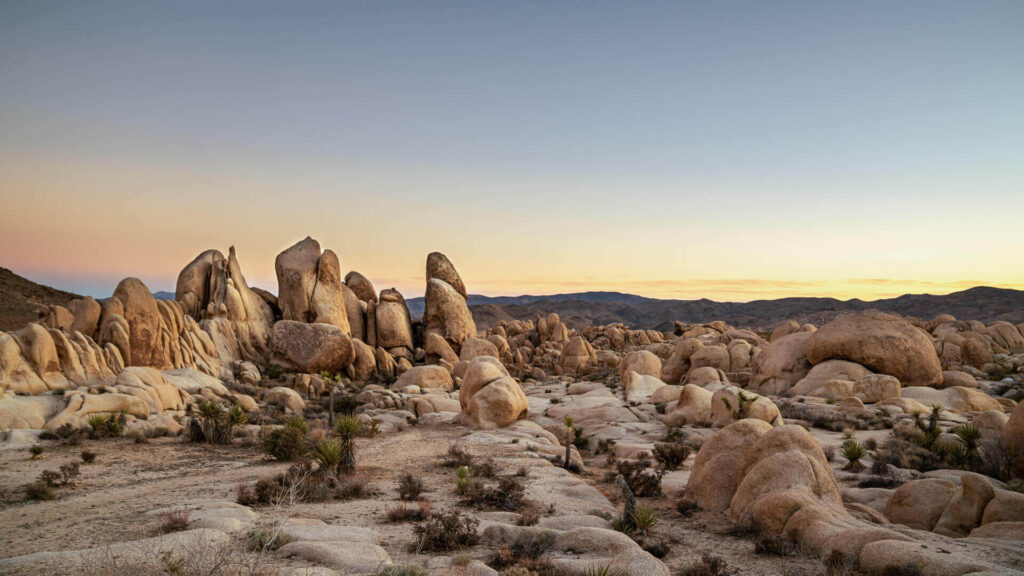
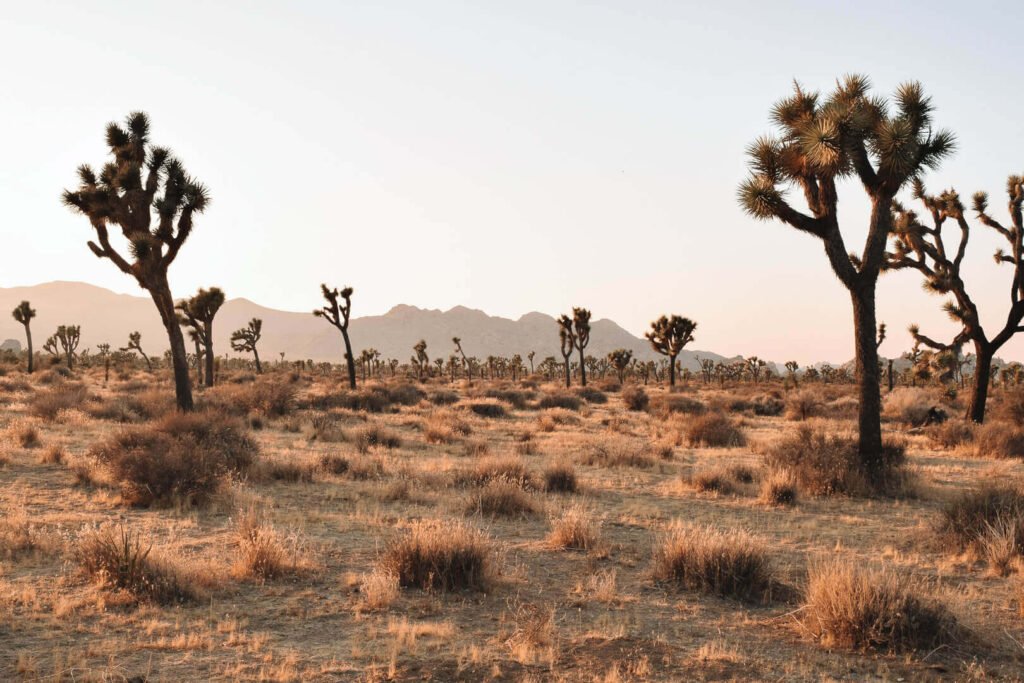
1. Joshua Tree National Park
This incredibly famous national park on the west coast has one of the most distinctive landscapes you can find in California. The Mojave and Colorado ecosystems clash in a wondrous way, creating a landscape of Joshua trees, barren rock formations and Colorado sand trails. The valley has gorgeous wildflowers, sand dunes and granite monoliths to discover.
Joshua tree is extremely loved by the residents of LA who regularly make weekends trips to this west coast national park. It’s close proximity makes it the ideal road trip from LA!
The park does not have any restaurants, accommodations or shops but the town of Joshua Tree is close by. The campground costs $30 per vehicle for a 7 day pass which is well worth the price.
The best things to do in Joshua tree is rock climbing, walking the gorgeous landscape and at night you can gaze at the clear skies with unobstructed views of the Milky Way.
The best family friendly trails in the park are the Bajada Trail or the Keys View Trail. For a unique attraction check out the Skull Rock near Jumbo Rocks Campground. For a list of best things to do in Joshua Tree you can check out my guide to The Top Most Fun Things to do in Joshua Tree National Park.
If you only want to visit the national park and not stay the night (completely understandable, I am not a huge fan of camping myself, there is a reason hot showers were invented) you can stay the night at Palm Spring just 50 miles away.
The town of Palm Spring is absolutely gorgeous during Christmas and deserves a whole blog to itself. You can make a Joshua Tree and Palm Springs road trip which is what many people with kids regularly do. Joshua Tree is one of the most loved west coast national parks.
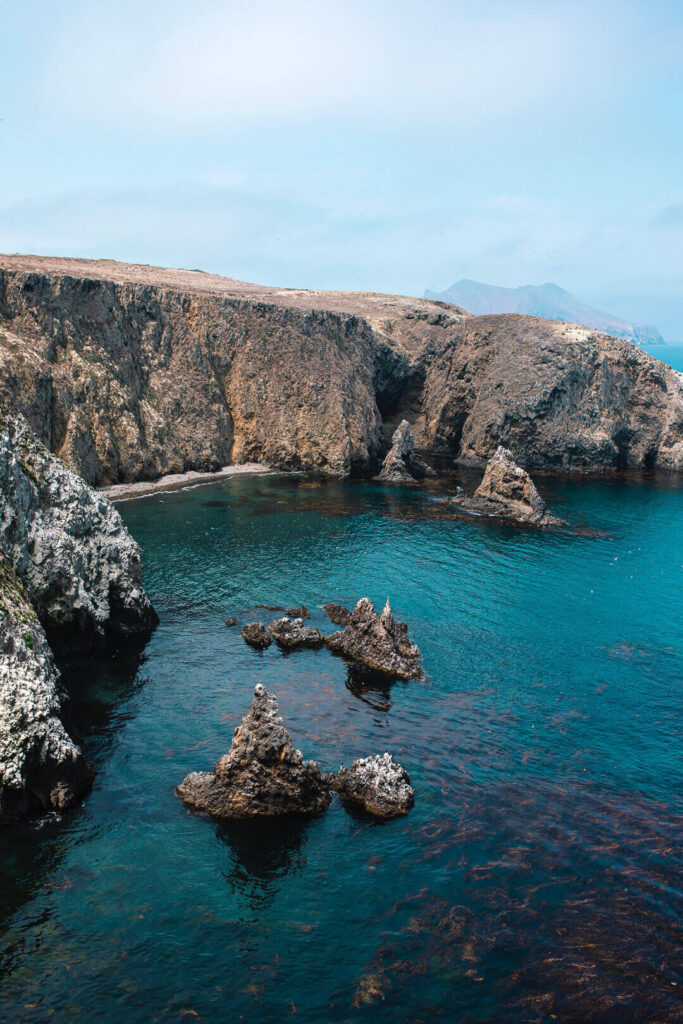
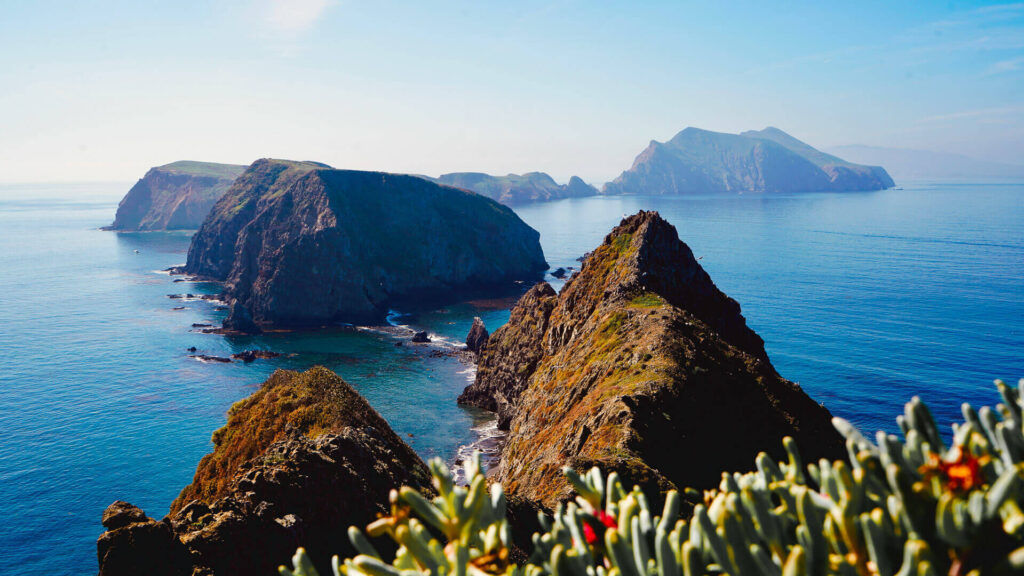
2. Channel Islands National Park
This is my favorite west coast national park, probably because I love the water. Five out of the eight islands of this archipelago sit inside the 6 nautical mile area of the Channel Islands National Marine Sanctuary. Called the Galapagos of North America the islands harbor over 2,000 species of plants and animals. The top three of these native animals bound to spike your curiosity are the Channel Islands fox, deer mouse and spotted skunk and the island fence lizard.
The biodiversity in the water is equally if not more thrilling. The waters around these islands are home to the California seal, common dolphin, humpback and grey whales and other marine wildlife.
To get to the Channel Islands you will need to take a ferry from the nearest port of Venture which is around 2 hours from LA. The ferry costs $59 for adults and $41 for kids.
The Channel Islands have no facilities for water, food or accommodation. It is recommended you pack your own food and lots of water when visiting here.
The best things to do here are snorkeling, kayaking, swimming and hiking the islands. The water is the best part of this national park and I highly recommend taking your snorkeling gear with you (who knows who used the snorkeling gear on rent).
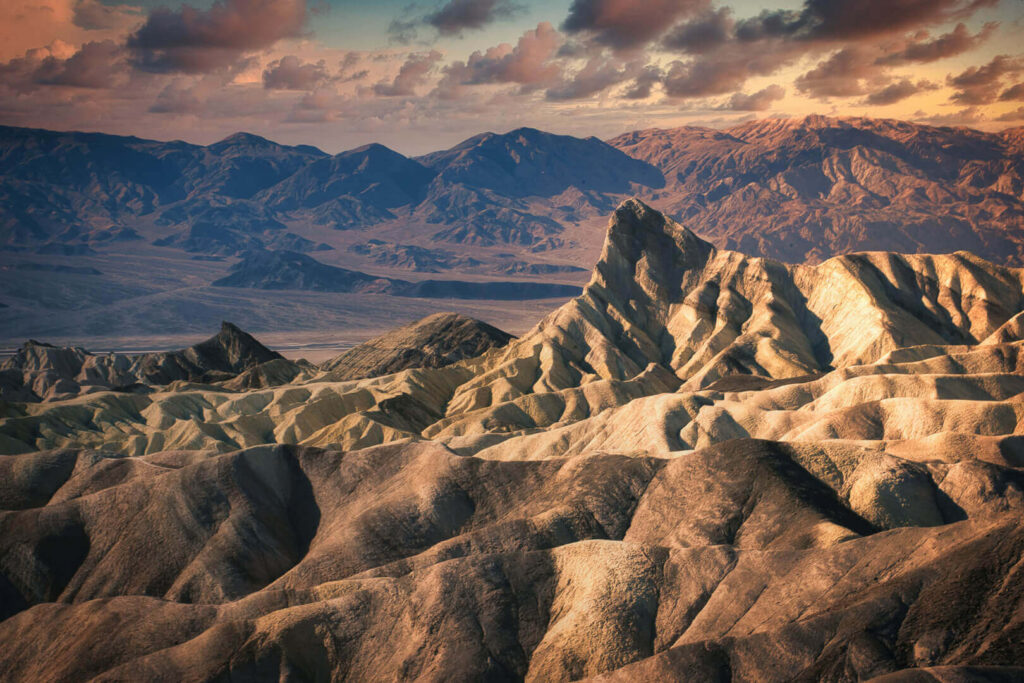
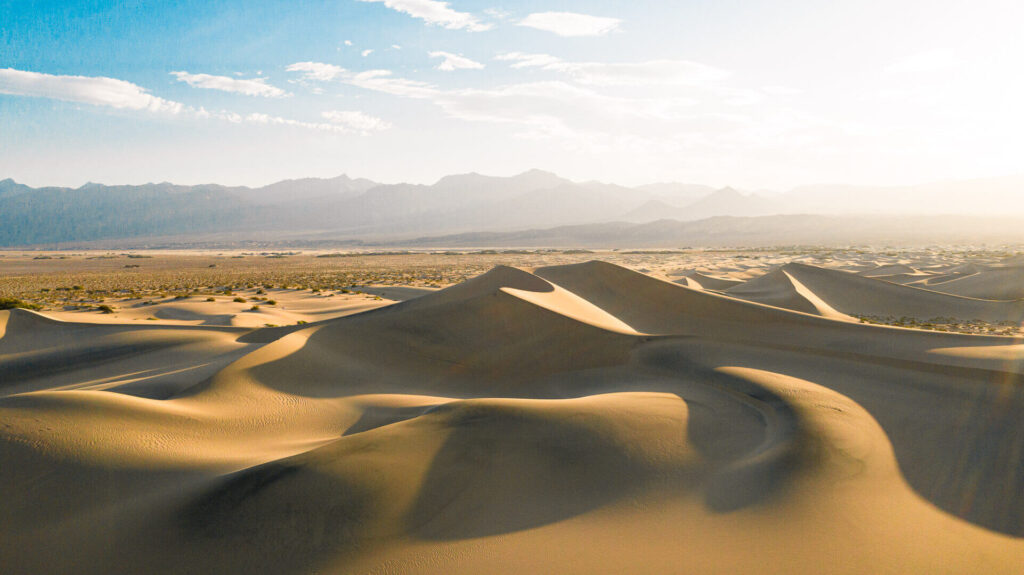
3. Death Valley National Park
Death Valley is one of the most beautiful and unique west coast national parks. The name, when I first heard it, put images of quite a violent and desolate landscape in my head. I imagined something like Mars. But Death Valley surprises you. Even in its dry, unescaping, never ending loneliness it might be one of the most beautiful places on Earth.
The temperatures in this region reach 130 degrees in the summers. Badwater Basin, the lowest elevation in North America is part of this national park. The park has a collection of more than a 1000 species of flora, fauna, succulents that thrive in these conditions.
It is also home to waving canyons, barren badlands and sand dunes with sprawling mountains and historic mines next to water springs. The landscape shifts so quickly, it surprises you.
The top things to do in Death Valley are the Mesquite Flat Sand Dunes, the views from Dante’s View and Zabriskie Point, Golden Canyon and Artist’s Drive.
Death Valley National Park is also a designated International Dark Sky Park which makes stargazing a great addition to the trip.
Death Valley Junction and a few beautiful inns and ranches inside the park provide excellent accommodation for the night which I recommend if you really want to explore everything this park has to offer.
The cost of admission per vehicle is $30 for a 7 day pass or you can visit on a national park free admission day.
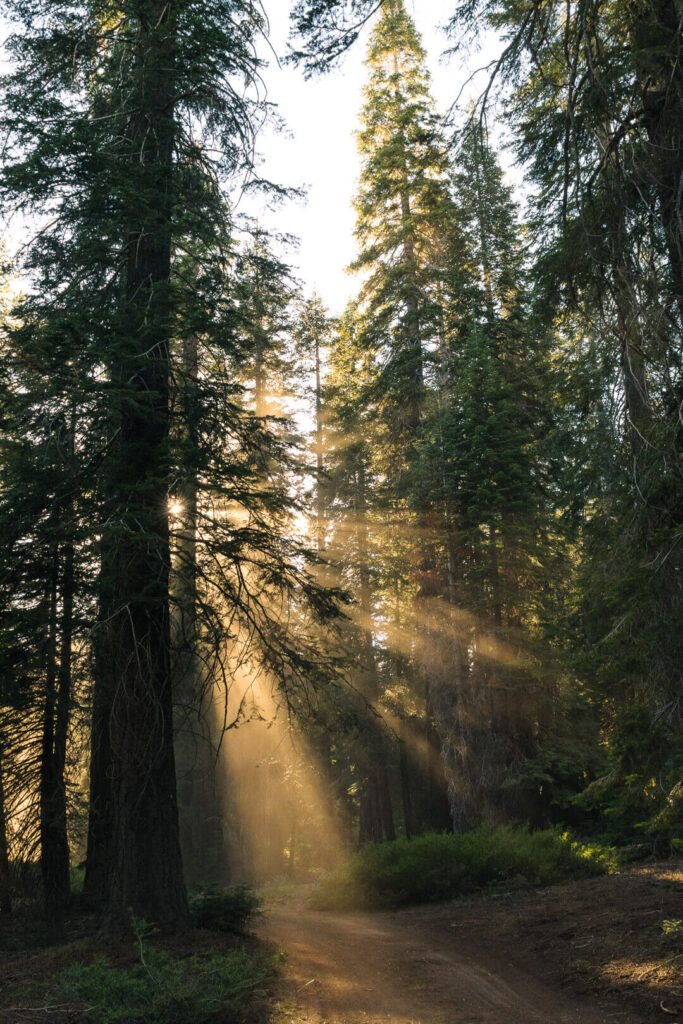
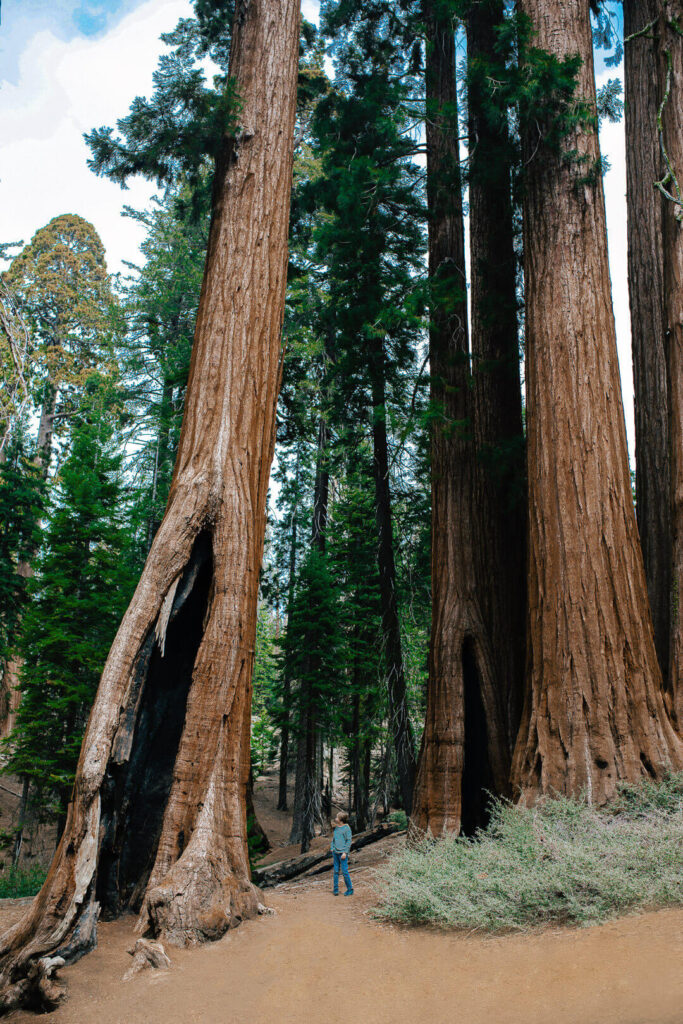
4. Sequoia and Kings Canyon National Parks
If you haven’t seen giant sequoia trees rising proudly to the skies then you are going to be stunned at the sight of these magnificent trees in Sequoia and Kings Canyon National Parks in California. The national parks are situated in the southern foothills of the Sierra Nevada mountains next to each other which makes it easy to explore them both together.
Pride of the Sequoia National Park is Mount Whitney, the highest peak in the contiguous United States which lies on the edge of the national park. Kings Canyon boasts of General Grant, the world’s second largest tree believed to be dating back to 700 BC.
Some of the top things to do in Sequoia and Kings Canyon National parks are hiking the gorgeous trails, taking the staircase trail to the top of Morro Rock, doing a guided tour with the park services, biking the trails, or camping in the forest.
The camping ground cost $35 per vehicle for a 7 day pass. The nearby town of Three Rivers is also a good place to set up camp and hunt for food.
Generals Highway connects the two west coast national parks and it is famous for being one of the most beautiful roads in the United States. It should definitely be on top of your list for a California road trip.
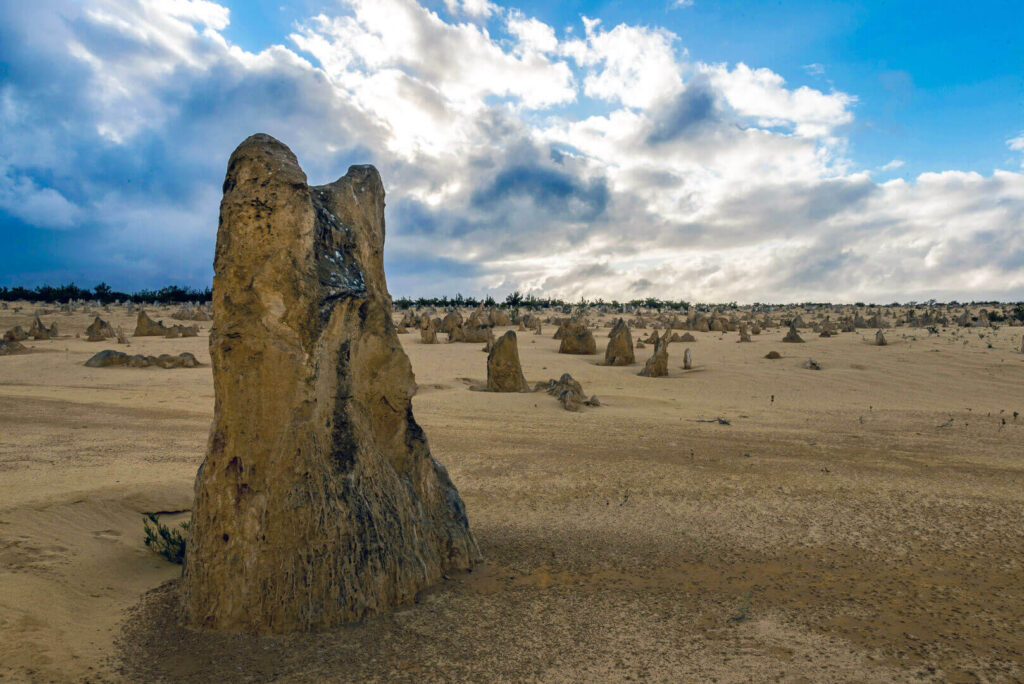
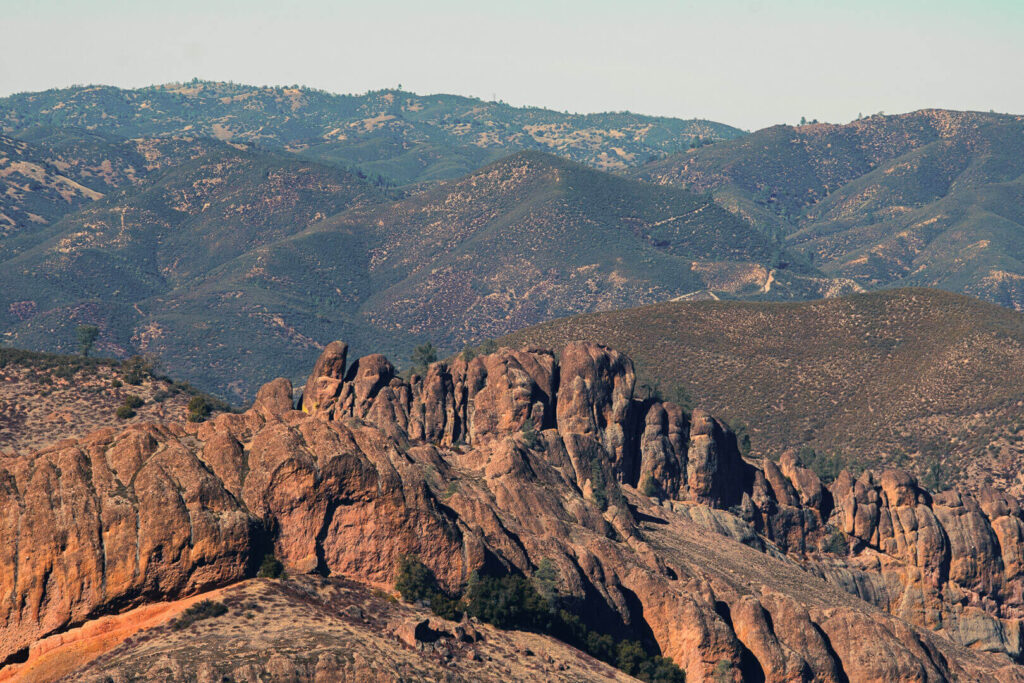
5. Pinnacles National Park
Pinnacles National Park gets its name for its gripping black and gold monoliths of andesite and rhyolite that poke up like whack-a-mole all over the national park. This west coast national park is the quietest in the region and great for explorers looking to step away from the crowds.
The park used to be a volcanic basin long ago, that was torn apart by a fault line. The upper part of this region became what is today known as the Pinnacles National Park.
The west coast national park is particularly known for its diverse species of birds that thrive here. The California condors are bred in captivity and released in the wild here due to conservation efforts. In addition you will find beautiful prairie falcons, peregrine falcons, golden eagles and 13 different species of bats living in caves.
Top things to do here are exploring the talus caves and valleys formed by ancient volcanic eruptions, seeing the birdlife and wildlife, rock climbing, camping and hiking. Some of the best trails to hike are the Hike Peaks Trail, Bear Gulch Trail and Balconies Cave Trail.
There are a lot of inns near Pinnacles national park where you can stay instead of the campgrounds if you prefer.
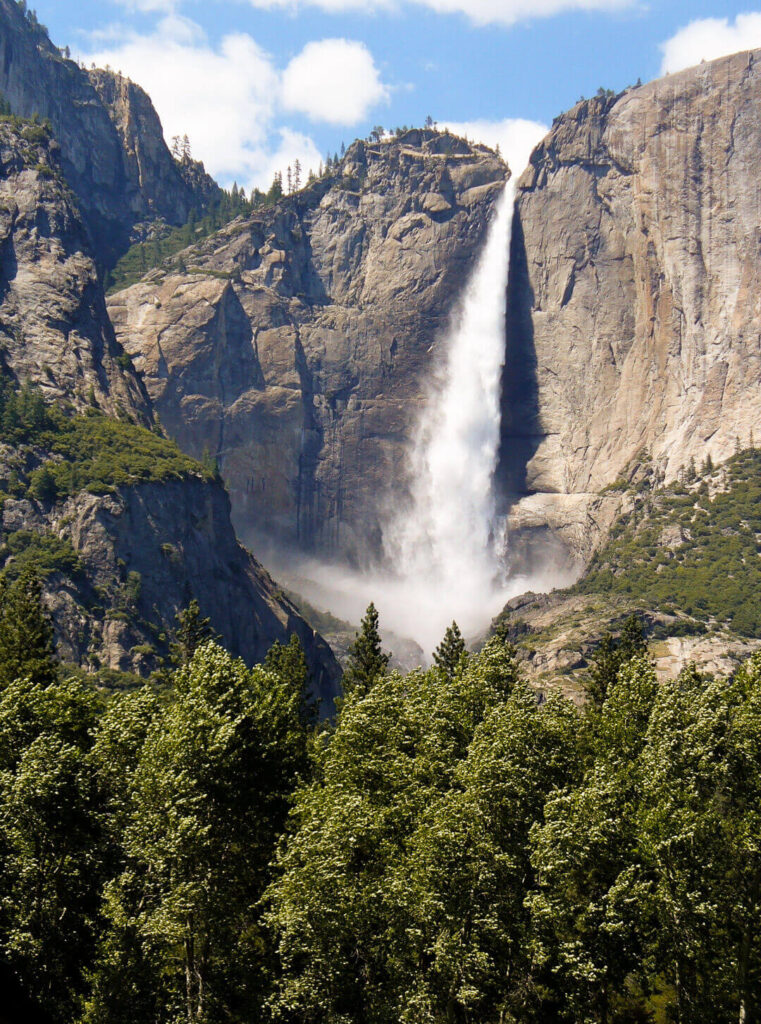
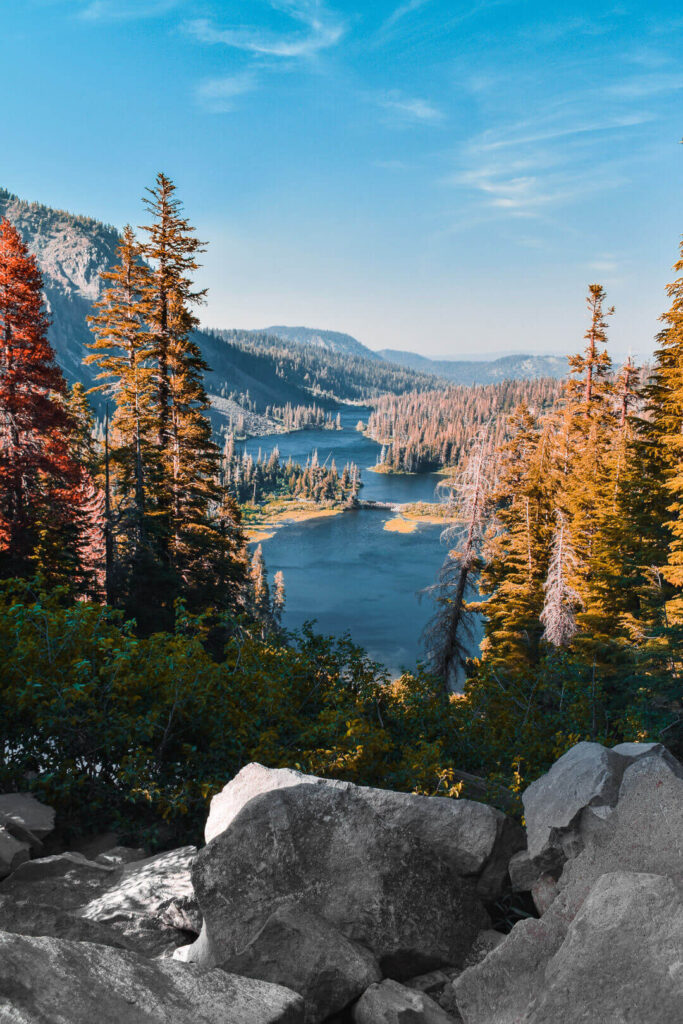
6. Yosemite National Park
Yosemite National Park is the epitome of everything beautiful in nature. It has lush old forest teeming with wildlife, thundering waterfalls and granite rock walls rising to the sky. Yosemite has become so popular that it’s much better to do a road trip during spring or fall when the entire population of California hasn’t descended upon the west coast national park. Checkout some cool Yosemite quotes as well!
The top things in Yosemite include scaling or just viewing the El Capitan and Half Dome rock faces. Some gorgeous hikes include Tunnel View, Merced River, Yosemite Falls and Bridalveil Falls.
Another beautiful area to visit is the Mariposa Grove, which is home to giant sequoias, and Tuolumne Meadows, with stunning wildflowers and lakes.
Yosemite has multiple campgrounds that are open for reservations – Upper Pines, Lower Pines and North Pines Campgrounds and Wawona Horse Camp.
Yosemite is way too gorgeous and vast to be done as a day trip. If you really want to see the beauty of this west coast national park you have to stay a few nights and explore. You can camp in the park or stay at the lodges near here which are especially romantic and cozy during the winters in the snow.
Yosemite is one of the most gorgeous west coast national parks and even though it is further away than other national parks it’s worth the drive to see the beauty.
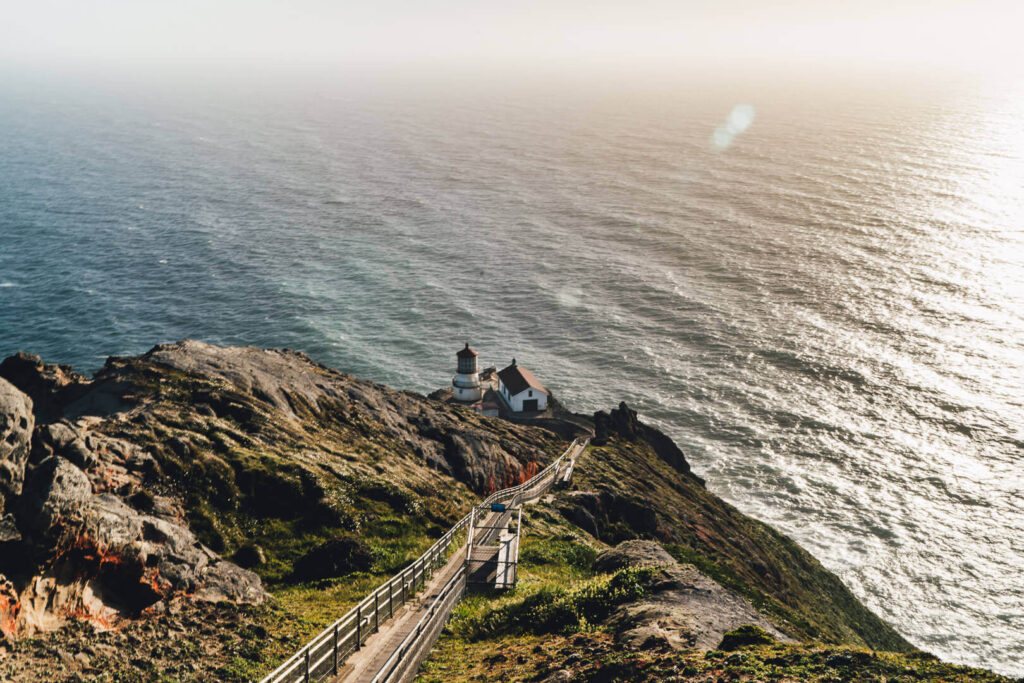
7. Point Reyes National Shoreline
Point Reyes National Seashore is one of the last wild beaches in California. It is a stretch of untouched pristine shoreline with nesting seabirds, raptors and grey whales swimming just beyond the shoreline. The shoreline has been protected from mainland influence by the Tomales Bay which almost completely cuts off the mainland.
The 180 square mile area is just 37 miles from San Francisco. The proximity to San Francisco and within driving distance from LA makes for a great road trip to Tomales Bay.
The protected lands of the seashore have been a boon to the species that thrive here. The tule elk grazes on the highlands above the shoreline and sea birds can be seen nesting. You can hike the preserved area and see the Tule elks grazing the grass with your binoculars. If you’re lucky you can also spot some rare birds here.
If you are staying in Tomales Bay the nighttime is another adventure. I did a tour to see the glowing waters of the bay at night. The glowing waters seem otherworldly. They are like sparkling stars in the water and something you definitely should not miss at all.
The Point Reyes National Shoreline is a watery and foggy haven protecting all species that thrive here. If you are used to the sunny and dry national parks of California, Nevada and Utah this contrastingly different landscape is an opportunity to explore a new habitat.
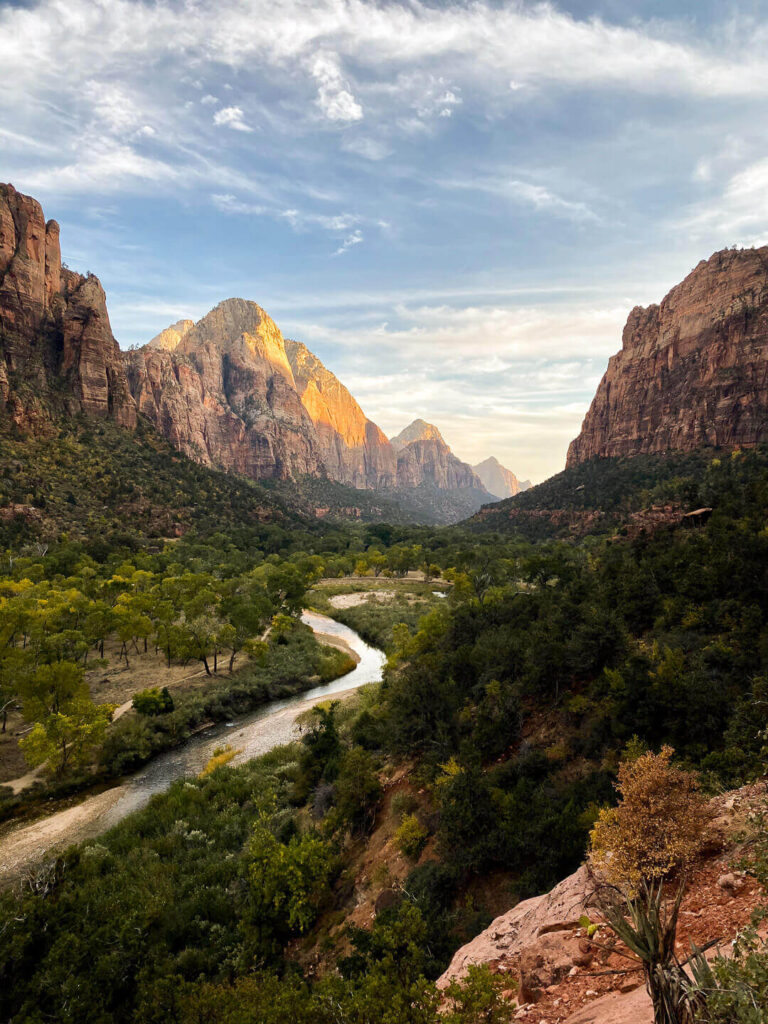
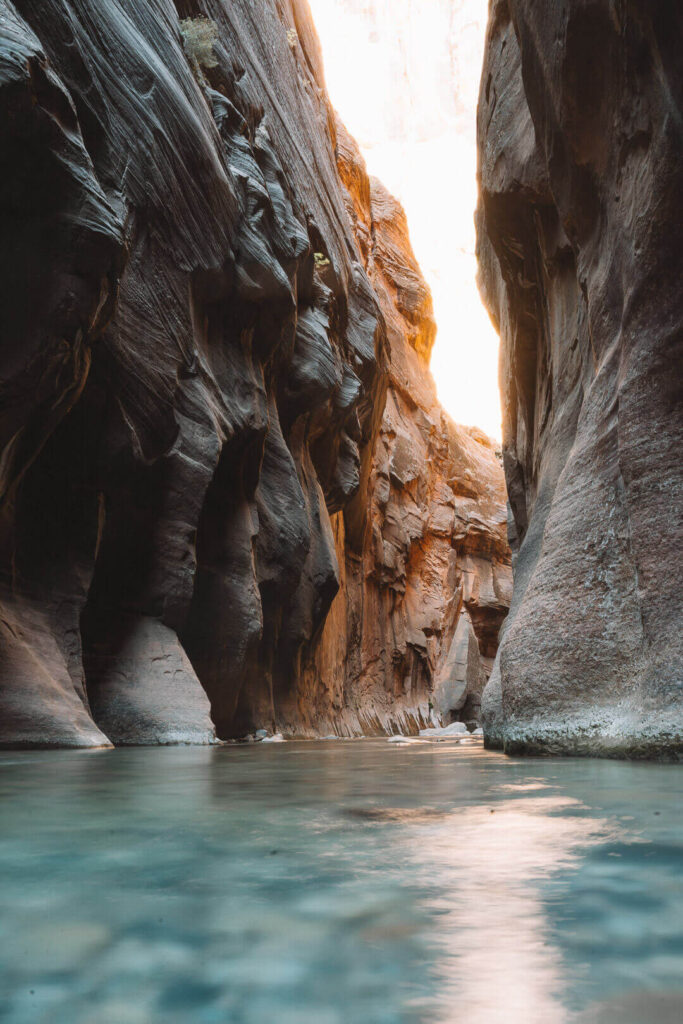
8. Zion National Park
The jaw dropping red canyon at Zion National Park in Utah is a wonder to behold. Virgin River hugs the canyon as it flows down from the Emerald Pools into the hanging gardens of the national park.
Zion National Park is a 6.5 hour drive from LA which doesn’t leave room for a day trip but if you have already finished your other west coast national parks then this is the next obvious choice.
The park shuttle follows a trail alongside Virgin River where you can hop on and hop off at any of the 6 stops to admire the beauty of the forest. In April the wildflowers begin to bloom after a replenishing spring and you can spot baby mule deer and bighorn sheep. April is the best time to go without the crowds.
There are a multitude of things to do at Zion National Park. You can start by trekking the Riverside Trail which is a family friendly trail to do or opt for the Narrows Trails and walk in the river. Kayenta Trail leads you to the Emerald Pools while if you are feeling up to it you can climb all the way to Angel’s Landing for views across the canyon.
If you want to catch the views instead, head up to the top of the canyon at either Canyon Overlook or Timber Creek Overlook where on good days you can see as far as Mount Trumbull.
The best place to stay for a rustic holiday is at Zion Lodge inside the park but for a more modern room you can also book the Cliffrose Lodge. The town of Riverdale is close by and provides great food options like Oscar’s Cafe.
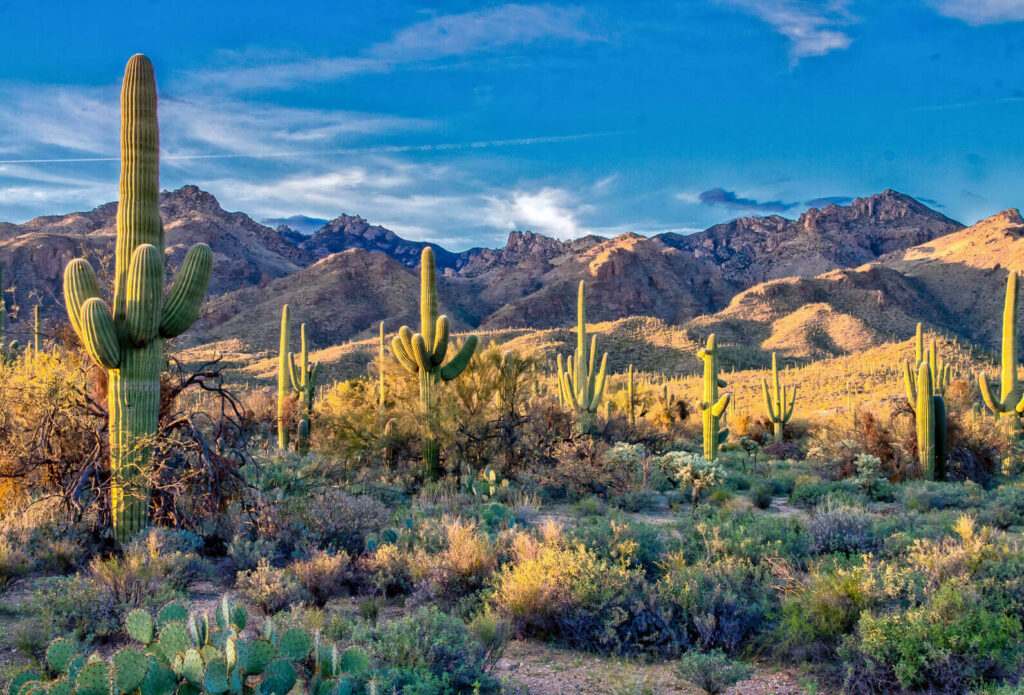
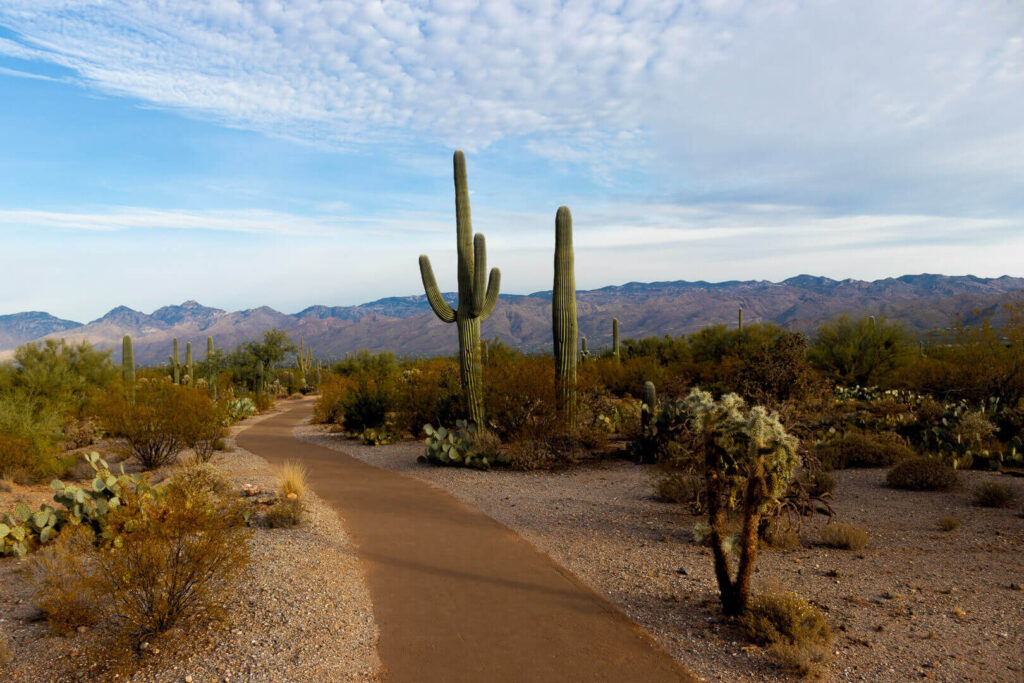
9. Saguaro National Park
Remember those cacti we used to draw as kids? They were huge, had one big stem in the middle and two poking out on the right and left. That is exactly what saguaro cacti look like. I didn’t think they existed but turns out there is a field full of them right outside Tucson, Arizona.
The Saguaro National Park is divided into two sections by the city in the middle. West Saguaro National Park has the prominent saguaro cacti rising up coated in their extremely Instagrammable lemon green color.
The Cactus Garden Trail is the perfect way to see all the different varieties of cacti including the saguaro, the barrel cactus, yuca, cholla and the prickly pear. The Bajada Loop drive is the main road where all the hikes branch off. Some other interesting hikes are Signal Hill with ancient petroglyphs, Sendero Esperanza Trail and the Desert Discovery Trail.
The cost per vehicle is $15 per vehicle for a 7 day pass. There are 6 campgrounds in the area which are only accessible by hiking so be prepared if you are planning on staying the night here.
I have seen a lot of pretty sunsets all over the world from Santorini to India to LA and I get the allure of visiting bigger national parks like the Grand Canyon but for some reason I really loved the cute lemon cacti that made this trip the best of them all.
For a complete guide to Saguaro National Park checkout the Saguaro National Park Guide. This is one of the best west coast national parks for the kids to visit for their first time.
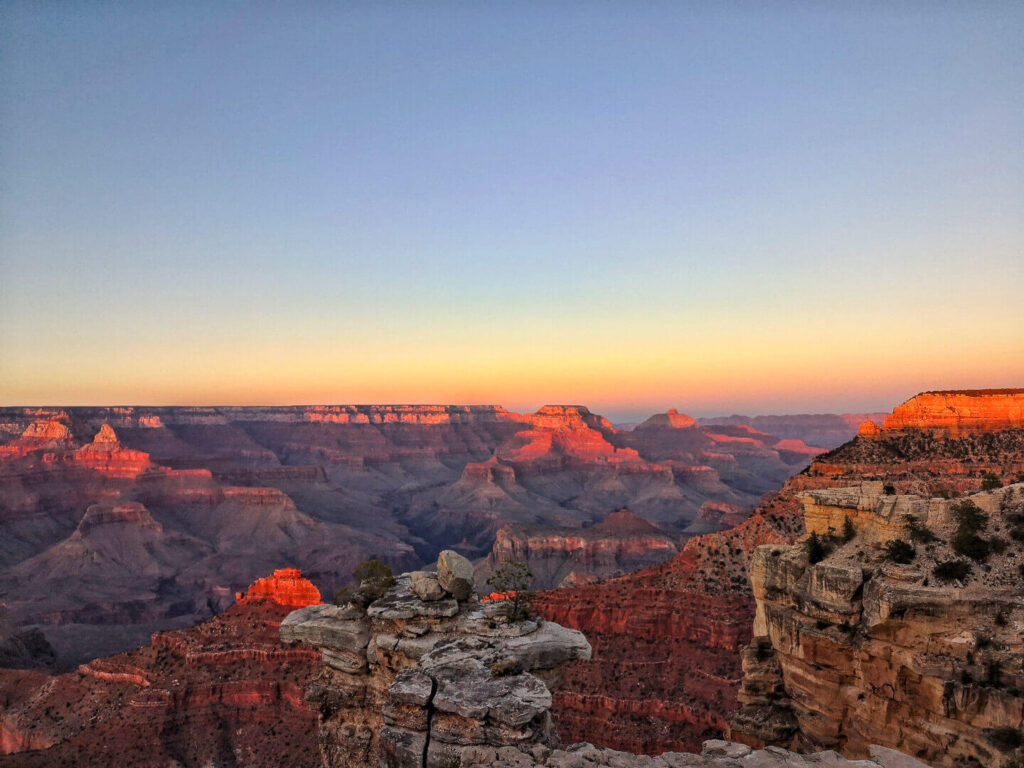
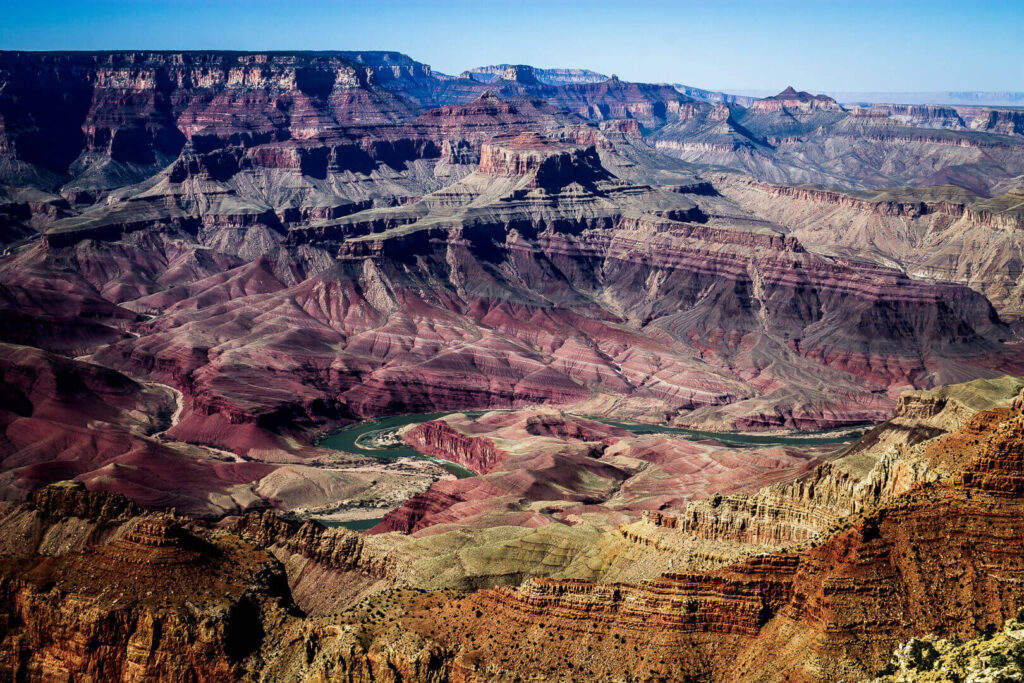
10. Grand Canyon National Park
The fiery canyon walls that descend into dark crevices, the tumultuous blue of the Colorado River that stands in contrast to the rusty rock and views that are famous all over the world, everyone knows the Grand Canyon.
To visit the Grand Canyon can seem like a daunting task to anyone that isn’t familiar with it. The best guide to explain how to tackle the Grand Canyon is The Grand Canyon for Beginners guide.
As a short summary – the Grand Canyon is divided into 4 sections. North Rim is covered with birch, aspen and maple trees and less known than the other rims.
South Rim is the most visited part with the typical rust red rock cliffs that you imagine the Grand Canyon to be. It has the Trail of Time, Hermit’s Rest and Hopi Point.
The West Rim located on the lands of the Hualapai tribe is known for the dizzying Grand Canyon Skywalk. It’s the closest part of the Grand Canyon to Las Vegas and as such receives a huge crowd of people.
It is easy to appreciate the beauty of the Grand Canyon by looking at the views from your car and taking some short walks. But to really appreciate the national park you should apply for a permit and go hiking one of the trails that go deep into the canyon. The permits are allotted by lottery that you need to apply for a permit 4 months in advance. The Ultimate Grand Canyon Travel Guide explains how to do it.
Grand Canyon deserves at least a few days to go to the different rims and really appreciate what each of them has to offer. This is the most beautiful and awe inspiring national park on the west coast and one that should be on everyone’s bucket list.
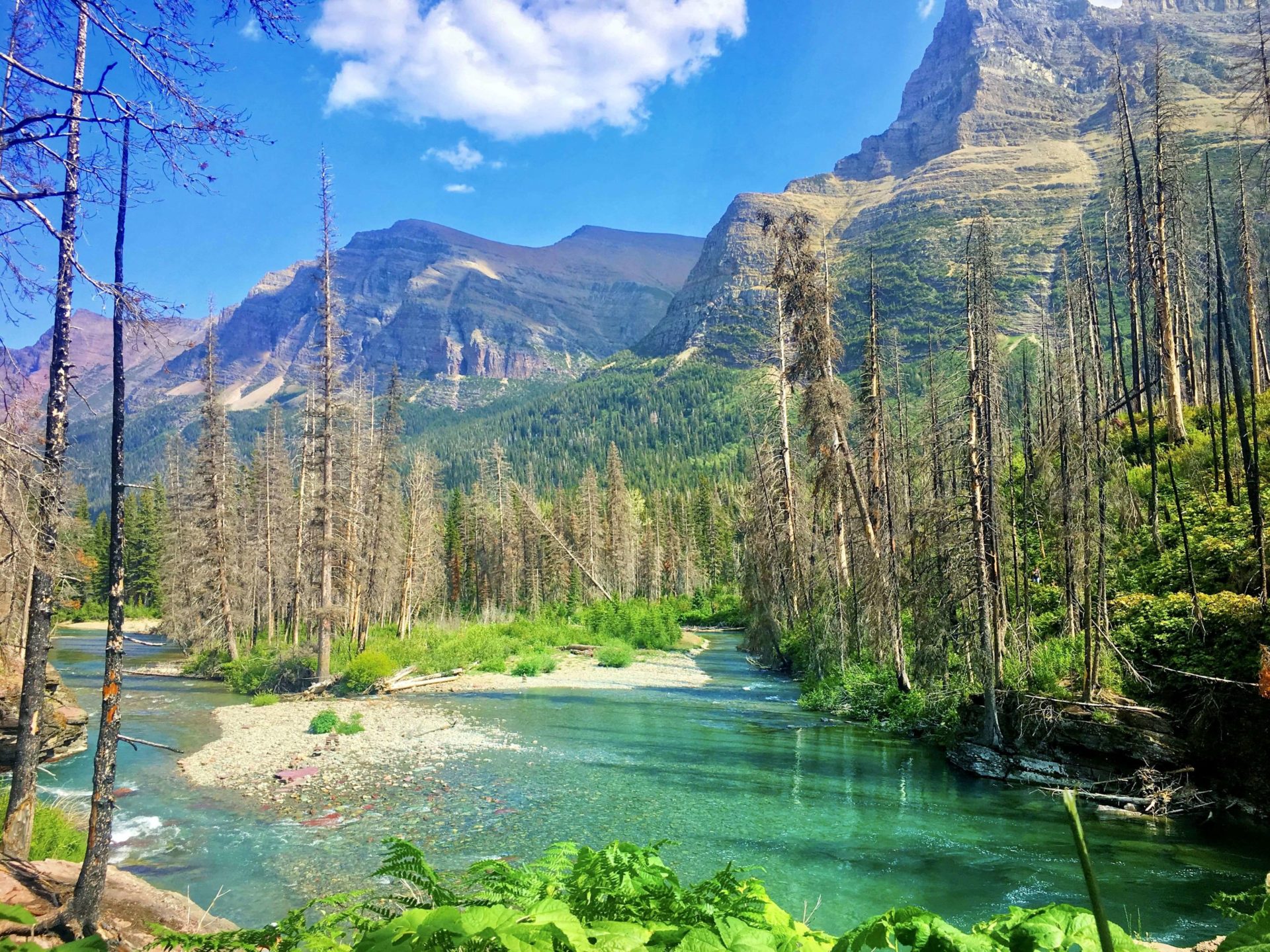
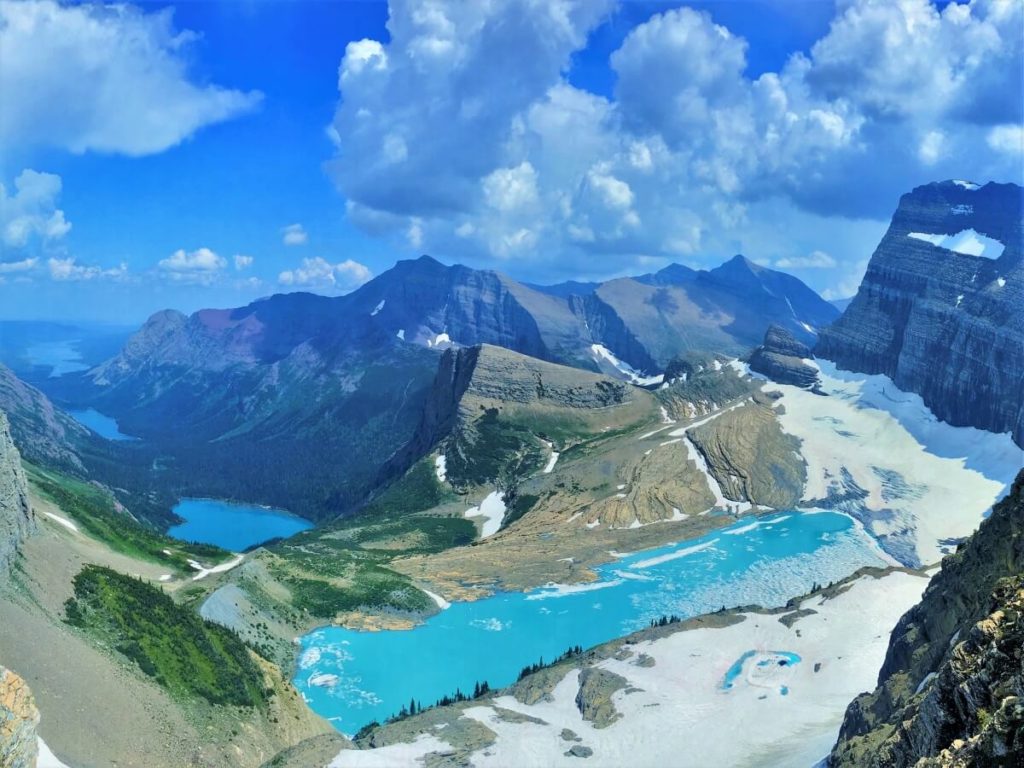
11. Glacier National Park
By Julia Williams at The Cure for Curiosity
One of the most beautiful national parks in the United States is Glacier National Park. Upon arrival, you’ll be greeted with stunning vistas and mountain scenes as well as more unique sights, like glaciers and icebergs floating on turquoise, glacial fed lakes.
Plan your visit for mid-to-late summer to see the best of the park. This is when the snow and ice finally melt and the Going-to-the-Sun Road that cuts through the center of the park opens.
Spend your days taking in some of the top hikes in Glacier National Park, like the Highline Trail, Grinnell Glacier Viewpoint Trail, Saint Mary Falls, and Virginia Falls. They offer stunning views that you can’t get from the road. If hiking is not your style, you can see similar views with activities like horseback riding through the park or taking a boat tour on one of the many lakes in the park.
Since Glacier National Park is situated in the mountains, getting around can be time consuming (but very picturesque).
The main Going-to-the-Sun Road is only 2 lanes wide and is the only way through the center of the park. Because of this, you should plan to stay at one of the many lodges or campgrounds available right inside the park. It will help minimize your time driving and maximize your enjoyment. One of the best accommodation options is the Lake McDonald Lodge which offers sweeping views across Lake McDonald.
As far as dining in the park goes, there are a few restaurants, cafes, and snack shops available. You’ll mostly find them located near the visitor centers and in the more developed parts of the park, like Lake McDonald, Apgar, Rising Sun, and Many Glacier. It’s also wise to pack a cooler with drinks and snacks while you are out exploring the park.
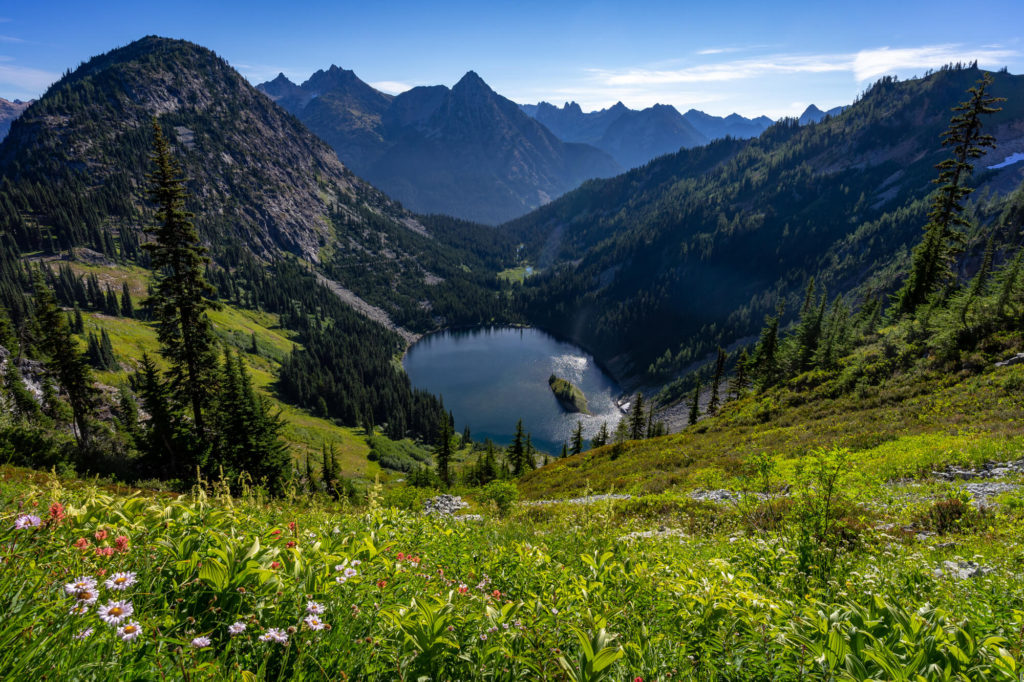
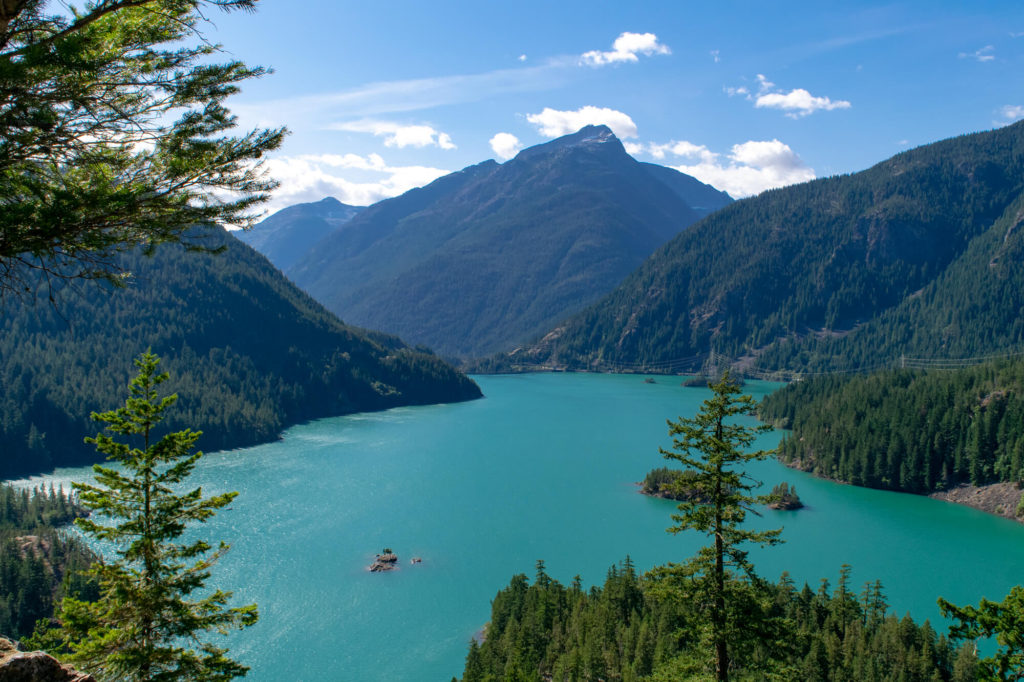
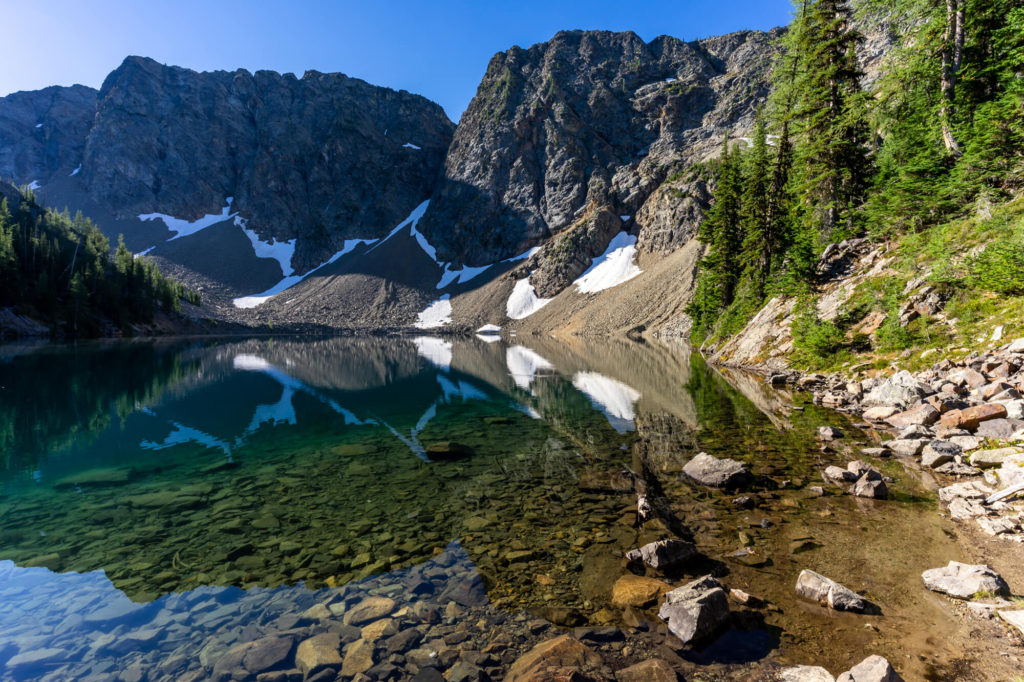
12. North Cascades National Park
By Matt and Alysha at West Coast Wayfarers
North Cascades National Park, tucked in the northwest corner of Washington State, just south of the Canadian border, is the least-visited of the three National Parks in Washington. While it might not get the fanfare or attention that Rainier and Olympic get, it’s well-worth the trip to the northwestern corner of the contiguous United States, where you’ll find a hiker’s paradise filled with turquoise alpine lakes and some of the best hiking in the Pacific Northwest. Plus, it’s free to enter, unlike most National Parks.
From Seattle, it’s a two and a half hour drive to the heart of the North Cascades, making it a perfect weekend getaway from Seattle.
There are two things that should be on every trip to the North Cascades. First, the drive along the North Cascades Highway (Hwy 20) is one of the most scenic drives in the state, and driving the length of it from Sedro-Woolley to Winthrop is a must-do. It’s only open in the summer through early fall.
Second is hiking. You’ll find some of the best hikes in the Northwest in the North Cascades, with rugged rocky peaks and stunning lakes around every bend in the trail.
Two of the best hikes in North Cascades National Park are the Blue Lake Trail, which is a relatively easy trail that takes you to a gorgeous crystal-clear alpine lake, while the Maple Pass Loop takes you on a difficult climb up and around an alpine lake, with spectacular views of the surrounding landscape.
There are plenty of other hikes for hikers of all experience and fitness levels in the park, including some fantastic overnight backpacking trips.
The best place to stay to explore the park is going to be either inside the park at one of the campgrounds that take reservations – Colonial Creek is the best location, right on the shore of turquoise Diablo Lake – or in the charming town of Winthrop on the eastern slope of the Cascades.
There are places to eat and drink in the towns on either side of the park, in Concrete, Marblemount, and Winthrop, but there are zero services inside the park, so you’ll need to make sure you do all your grocery shopping ahead of time if you’re planning on camping.
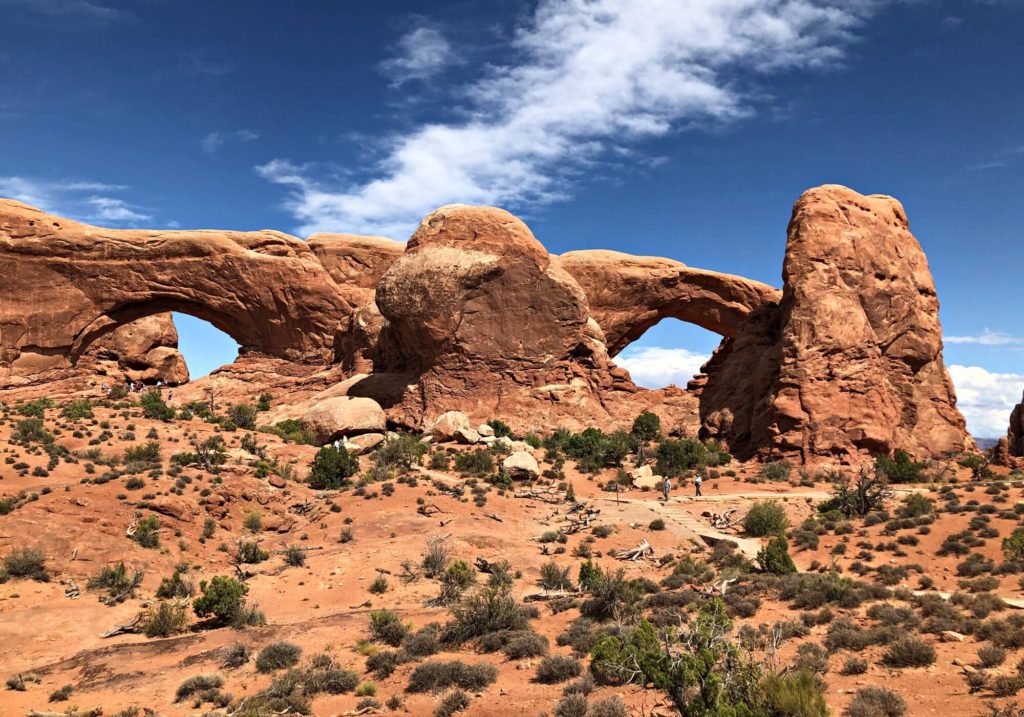
13. Arches National Park
By James at Parks Collecting
Arches National Park is home to over 2,000 natural arches. There are several key sections in Arches to visit, all along the only road in and out of the park.
The first section you come to after entering the park is the Park Avenue section. There is a lookout, but you can also hike down into the small ‘canyon’. The trail goes along a wash between dramatic cliffs.
The next section, after a short stop to see the appropriately named Balanced Rock, is the Windows section. There are two short trails here in opposite directions. One goes to the North and South Windows – beautiful arches that you can climb up into for views over the surrounding area beyond. In the other direction is the incredible Double Arch, where there are two arches intertwined.
Further along the road is the turnoff to the trailhead for the hike to Delicate Arch. This free-standing arch adorns Utah’s license plates and is probably the most famous arch in the park.
A short distance on is Fiery Furnace, a labyrinth of narrow passageways between ‘fins’ that glow like fire in the afternoon sun. You can only hike inside with a special permit or on a ranger-led tour.
At the end of the 29-mile road is Devil’s Garden, where the longest hike in the park, the Devil’s Garden Trail, passes eight arches. Here is the only place to stay inside the park, the Devils’ Garden Campground.
Most people stay in Moab, which is just five miles from the park’s entrance. There are all types of accommodations (Hyatt Place is a recommended resort) and plenty of restaurants and stores in Moab. Dining options range from food trucks to the wonderful Desert Bistro.
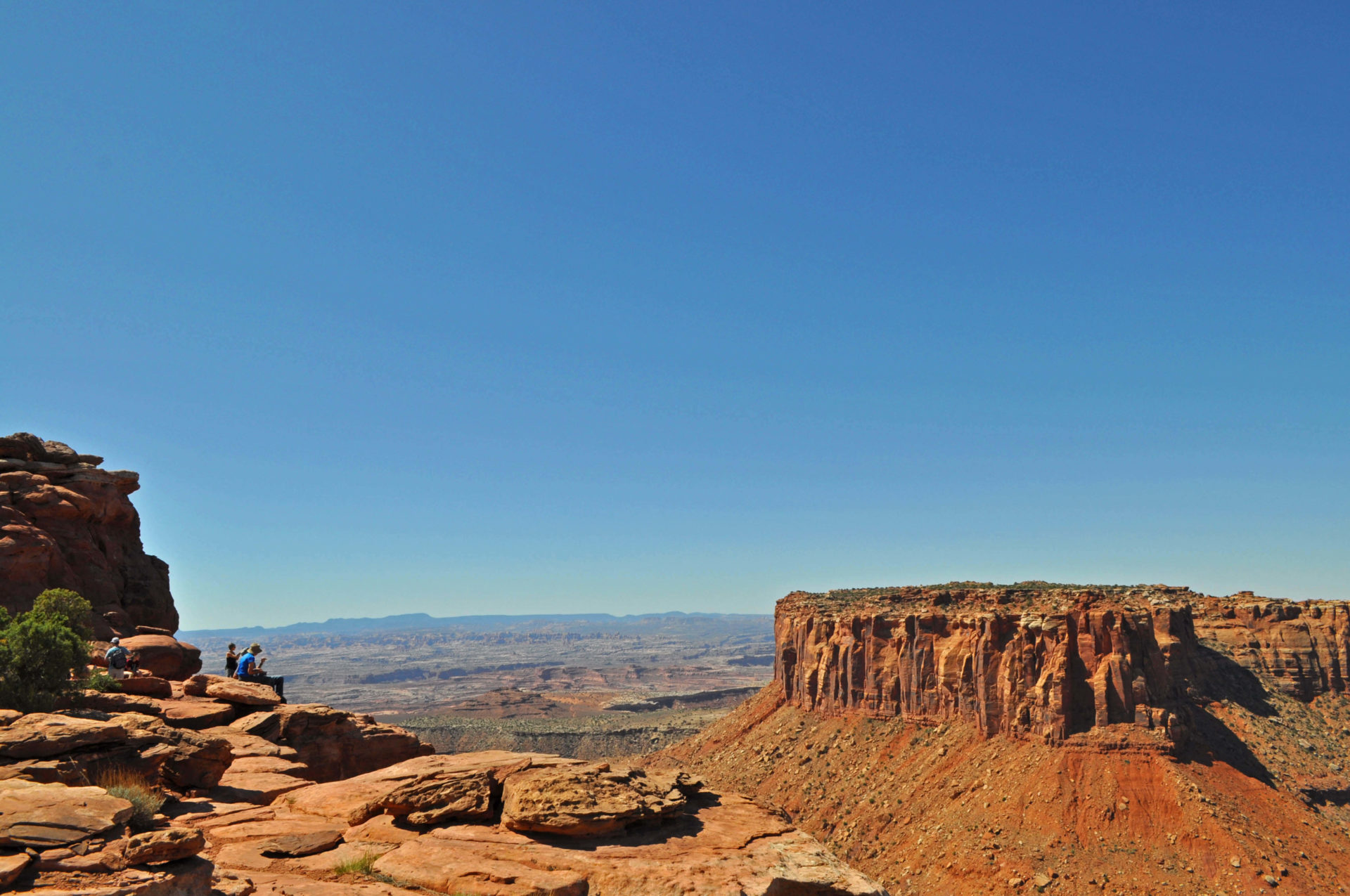
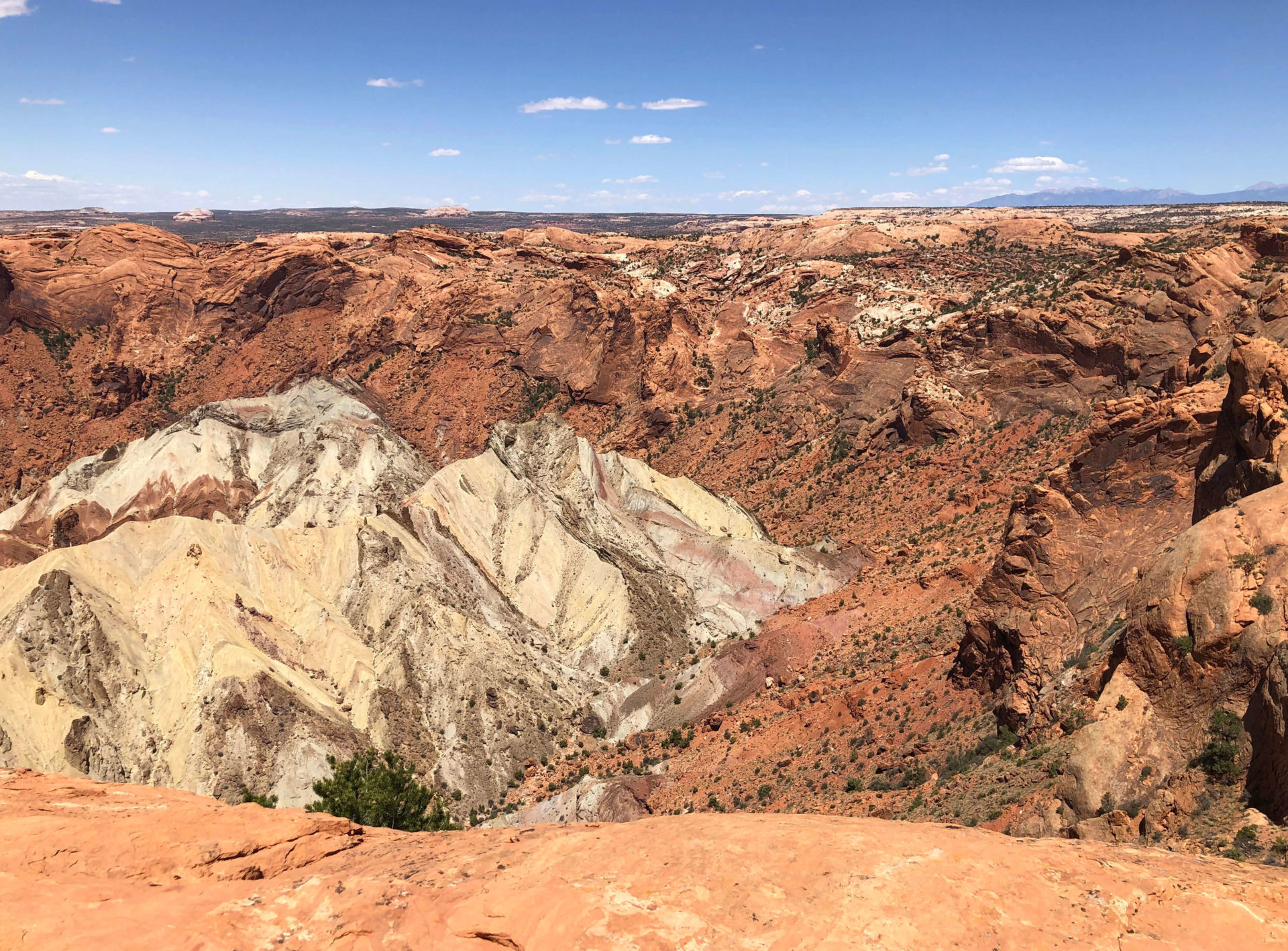
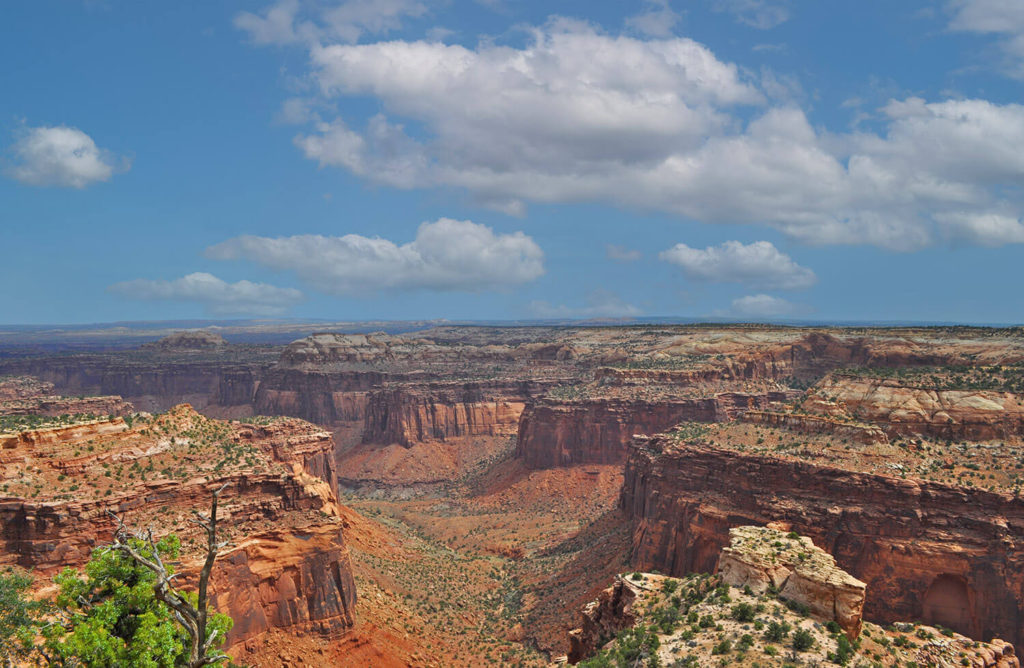
14. Canyonlands National Park
By Nikki at She Saves She Travels
One of the best, and perhaps most underrated west coast National Parks is Canyonlands National Park in southeast Utah. It’s a perfect complement to a southwest road trip or while visiting the Mighty 5 National Parks in Utah. The overlooks and highlights in Canyonlands National Park can be seen in a day, or visitors can spend a week exploring the trails in the park.
Near Moab, Utah, it’s located just 20 minutes from Arches National Park, so it’s often overlooked as an inferior destination. However, visitors are blown away by its massive canyons, beautiful overlooks and amazing hiking trails.
The most incredible views in the park can be seen on foot. The best hikes in Canyonlands National Park reward hikers with incredible views at the end of the hike.
Must-see highlights of Canyonlands National Park include:
- Mesa Arch
- Grand View Point
- Green River Overlook
- Upheaval Dome Trail
One of the most impressive hiking trails is Aztec Butte Trail. The western section of the trail is an easy hike, with views of 2 ancestral Puebloan granaries (like food pantries). The eastern part of the trail is a moderate hike with some scrambling, but the views at the top leave hikers speechless.
The park has limited services including no food and water only seasonally at the visitor center. Be prepared and pack everything needed for the day before arriving at the park. If going to Canyonlands National Park in the summer, be sure to take plenty of water and sun protection.
Visitors will want to book accommodations in Moab for easy access to the park. There are a ton of dining options in Moab, especially on main street. Moab is a small town that comes alive during peak tourism season, so finding good food is easy.
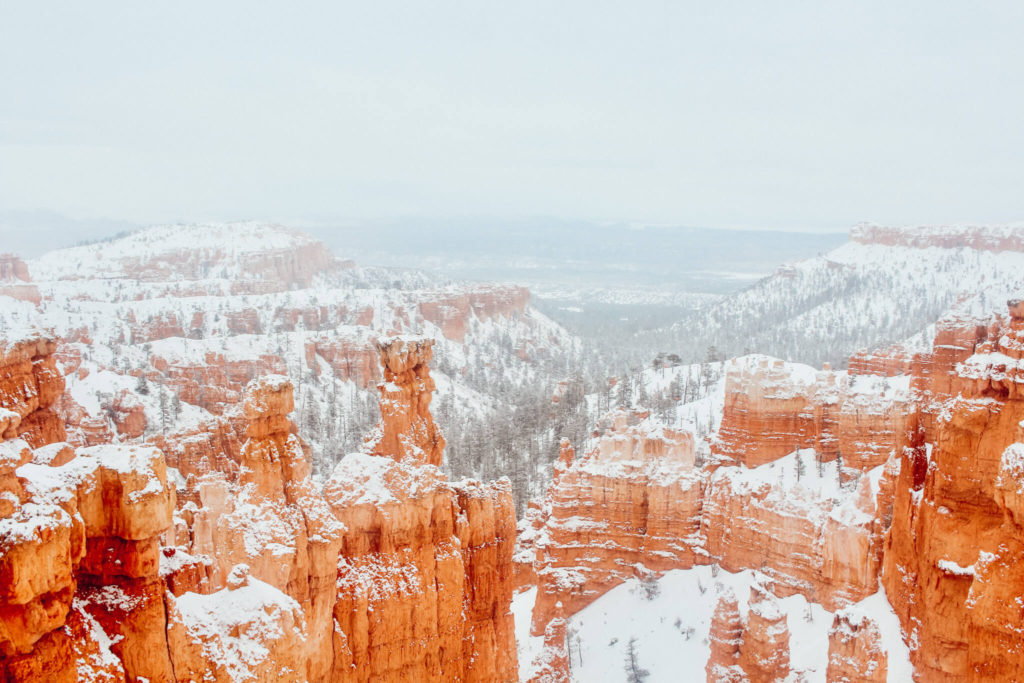
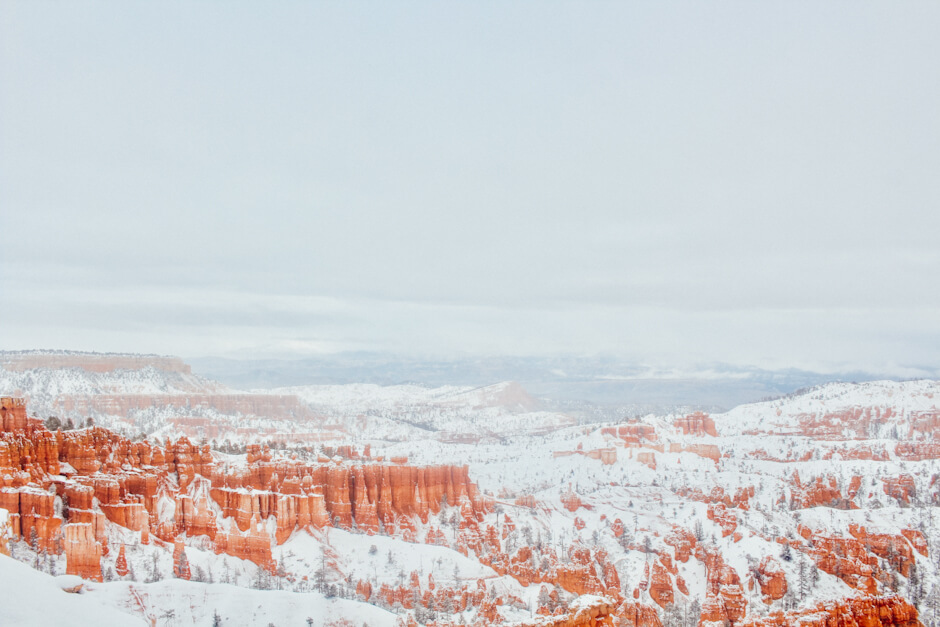
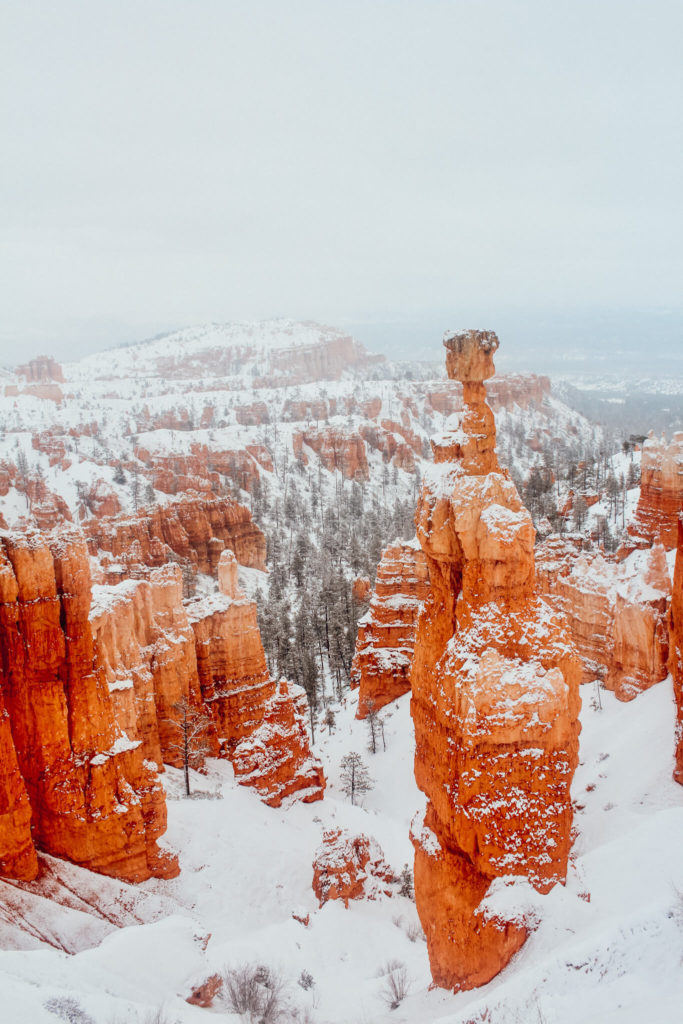
15. Bryce Canyon National Park
By Jenessa at Destination Daydreamer
Bryce Canyon National Park is a breathtaking park home to the largest collection of hoodoos (irregular columns of rock) in the entire world. Located in Southern Utah, Bryce Canyon makes a perfect stop on any Southern Utah road trip or a short overnighter from Salt Lake City.
Bryce Canyon consists of multiple scenic viewpoints overlooking gorgeous valleys of red rock hoodoos with trails leading down among these hoodoos. These trails are perfect for a different and unique experience than what the viewpoints offer.
Sunset Point is a great jumping-off point with perfect views of Bryce Canyon’s tallest hoodoo, Thor’s Hammer. From here you can hike the Navajo Loop Trail or walk along the paved Rim Trail which is stroller/wheelchair friendly even in severe weather! Other popular viewpoints are Inspiration Point and Paria Viewpoint.
For a totally unique experience, visit Bryce Canyon in winter right after a snow storm. The contrast of the red rocks and white snow is a breathtaking view you will never forget.
If you plan on doing any winter hiking, the park does require proper hiking boots with great tread or small traction devices must be worn that easily attach to your shoes. You can buy these traction devices from the visitors center, if needed.
Winter visitors can participate in an amazing free, ranger-guided snowshoeing tour through closed areas of the park. Space is limited and sign-ups begin in the morning each day at the visitors center. This is an incredible experience where you will visit areas of the park usually inaccessible in snow and will learn amazing things about Bryce Canyon’s geology and history.
Located only a few minutes from the park’s entrance is Best Western Plus Bryce Canyon Grand Hotel. This is a perfect place to stay which includes a delicious, hot breakfast to fuel you for your day of adventuring.
Bryce Canyon National Park is an out-of-this-world place that hopefully everyone gets to experience at some point in their life.
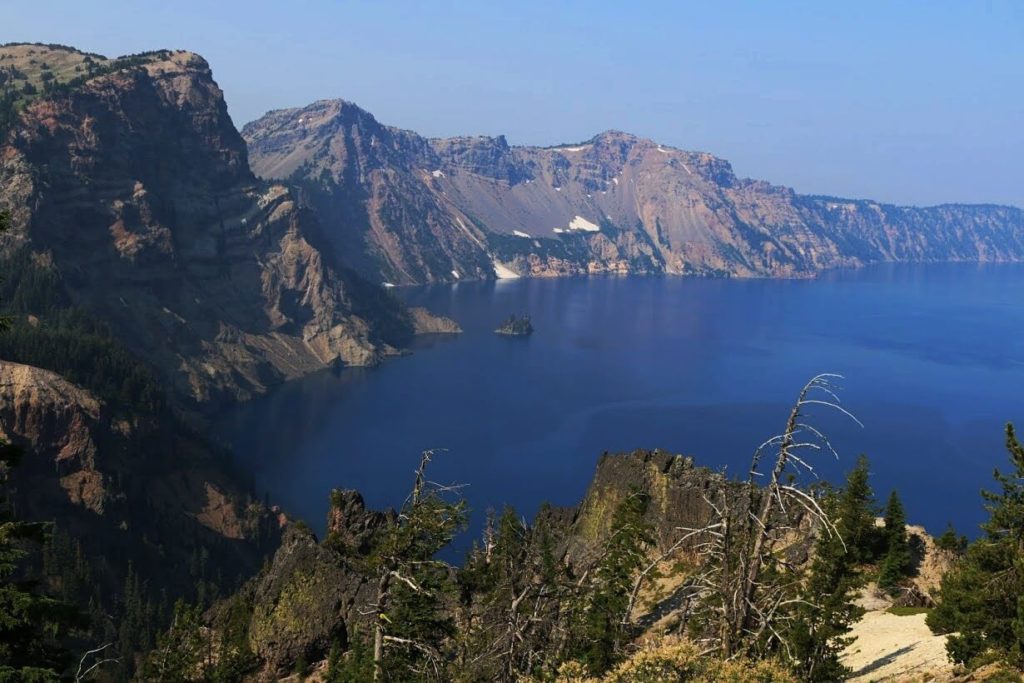
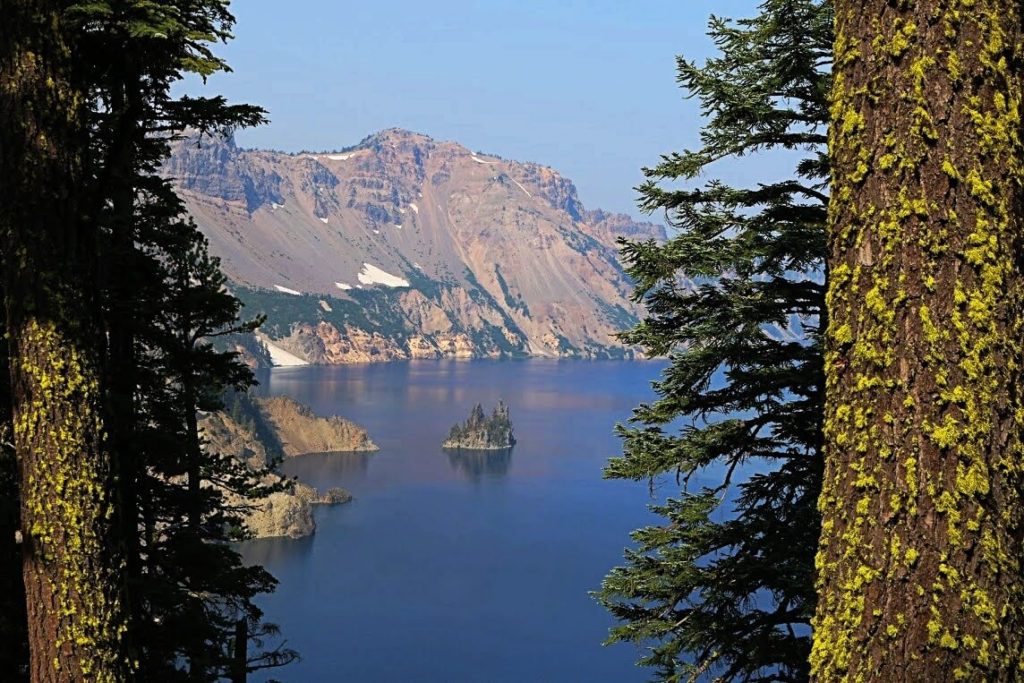
16. Crater Lake National Park
By Debbie Fettback from World Adventurists
Crater Lake, the only National Park in Oregon, was created 7,700 years ago after a volcanic eruption crippled the peak of Mount Mazama, a 12,000-foot-tall volcano. The volcanic hole cooled and filled with rainwater and snowmelt over 600-800 years.
One of the most scenic byways in America is the mesmerizing 33-mile Rim Road drive in Crater Lake National Park. You will be able to pull over at more than 30 locations to see many different perspectives of the park and stunning lake. The vibrant blue color of the lake will blow you away!
Since the volcanic terrain limits the nutrients and stops streams from entering the lake, the water stays a bold blue. You can enjoy the water from a boat tour of Crater Lake. Otherwise, you can swim in designated areas, but cannot bring any kind of personal boats or flotation devices onto the water.
The Rim Road drive is doable in a day, but it is so gorgeous you would wish you had more time. There are also several incredible hiking trails for viewpoints you do not get from the car.
The most popular time of year to visit Crater Lake is during the summer months. In winter, parts of Crater Lake close due to the dangerous conditions, so plan your trip accordingly.
During the summer you can extend your stay by camping or staying in a lodge. The historic Crater Lake Lodge has some of the best views of the park due to its location on the rim of Mount Mazama’s crater.
There are limited dining options near Crater Lake, but a few options are the Annie Creek Restaurant, Rim Village Café, or the Crater Lake Lodge Dining Room.
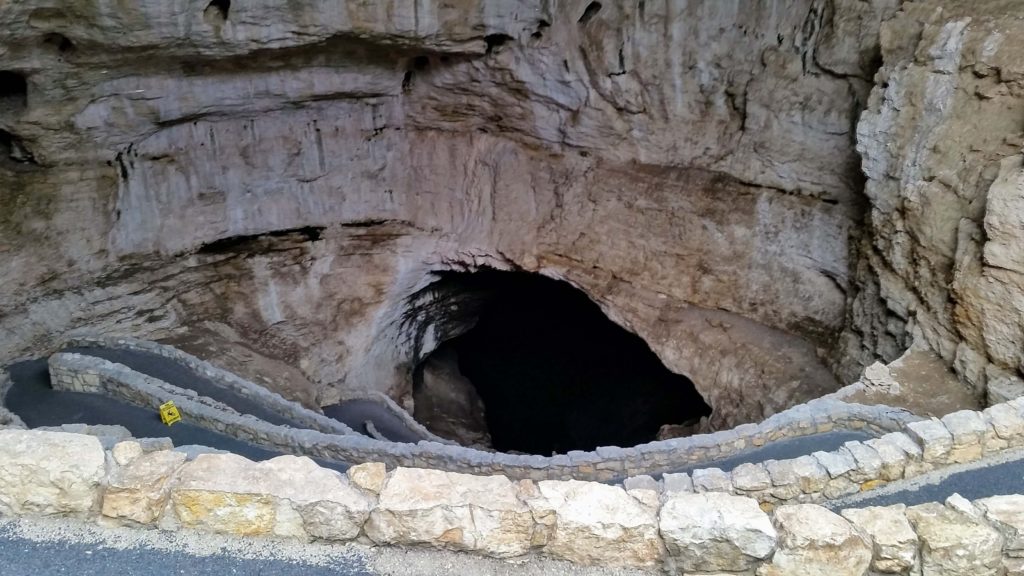
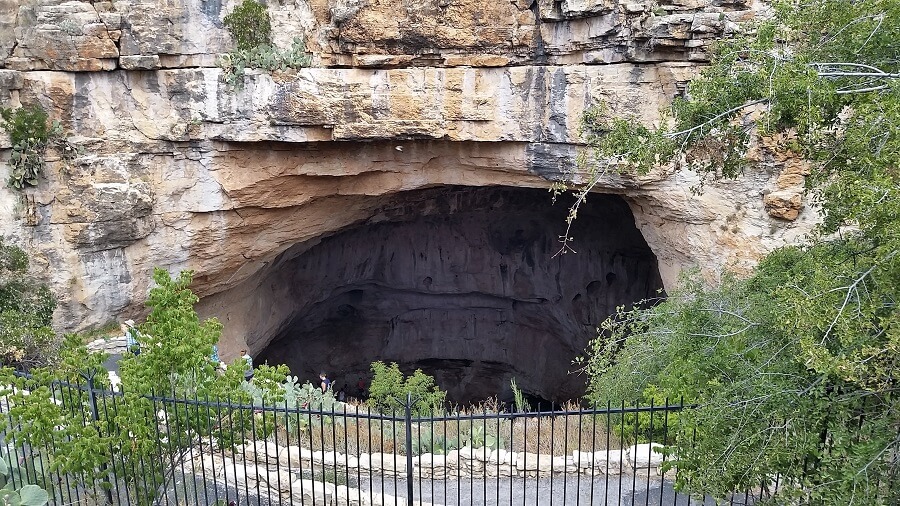
17. Carlsbad Caverns National Park
By Kristen at Yonderlust Ramblings
Carlsbad Caverns National Parks is one of those rare destinations whose true beauty hides beneath the surface, and that is what leads to its undeniable mystique! It is a National Park that appeals to the imaginations of both children and adults alike, with a variety of options to explore for every kind of visitor!
The most popular attraction at Carlsbad Caverns National Park is the self guided hike on the Natural Entrance Trail. This 1.25 mile roundtrip trek descends through a gaping hole in the surface into the depths of Carlsbad Caverns.
Here visitors can experience some of the cavern’s icons, including the breathtakingly immense “Big Room”, the “Hall of Giants”, and the “Bottomless Pit”, along with an abundance of other worldly formations and subterranean pools! The Natural Entrance Trail is steep and at times slippery, so there is an elevator visitors can take if opting not to hike down into the caverns or back out.
In addition to self guided hikes in Carlsbad Caverns, there are also ranger led tours to more remote and mysterious sections of the caverns, such as King’s Palace and Slaughter Canyon Cave. And don’t be fooled into thinking that there are no above ground options at Carlsbad Caverns!
There are several surface hiking trails, nightly bat flight programs from May through October, backcountry camping, night sky programs, and a handful of other outdoor adventures to be found right outside the park’s borders in the southwestern town of Carlsbad!
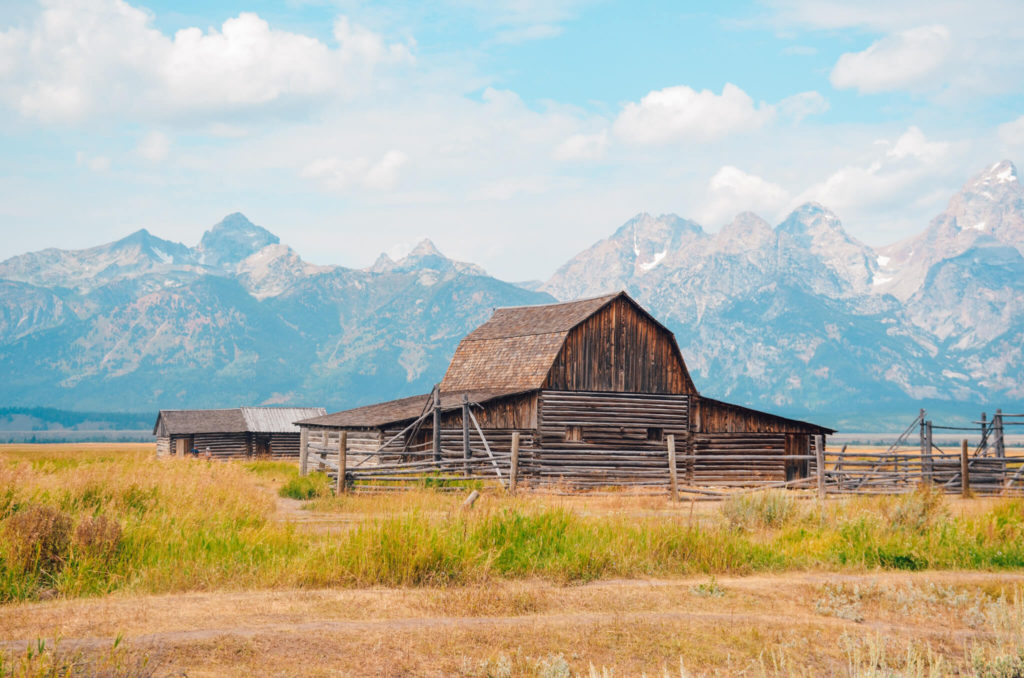
18. Grand Teton National Park
By Daria at The Discovery Nut
Located at the foothills of the namesake Grand Teton mountain range, Grand Teton National Park is one of the most scenic national parks in the intermountain west. Here, the jagged, snow-covered mountain peaks frame the gorgeous alpine meadows and clear blue lakes.
Grand Teton is a relatively compact park, and you can hit all of its highlights in just a day by driving the 42-mile scenic loop that begins in Jackson in the south and continues north on 191/89/26. From this drive you can pull over and see the famous spots including Snake River Overlook, Oxbow Bend, Elk Ranch Flat and Signal Mountain.
However, I recommend spending 2-3 days here to enjoy a mix of hiking, kayaking and camping.
For example, Jackson Lake and Jenny Lake offer amazing opportunities for canoeing and kayaking. You can also take a shuttle boat along Jenny Lake and when you disembark on the other side of the lake, hike to Hidden Falls and Inspiration Point.
The area around Jenny Lake is home to many trails that range from easy to strenuous, including the trail that loops around the lake. It’s especially popular in summer, so I recommend arriving early, if you want to enjoy uncrowded trails.
One of the most popular spots in Grand Teton National Park is Mormon Row, home to the most photographed barns in the United States and a place with rich history where the first settlers in the area established a community in 1890s. If you, too, want to photograph this iconic structure, make sure to arrive early in the morning, because it’s the time when the light is the best.
The best stay near Grand Teton National Park is Jackson where you can find plenty of hotels, restaurants and stores catering to tourists.
Another option is to camp at Grand Teton which is going to be a lot cheaper, however, keep in mind that camping spots fill up very quickly, and if you want to get one, you need to arrive in the morning. Some campsites also have reservation systems, so make sure to check ahead.
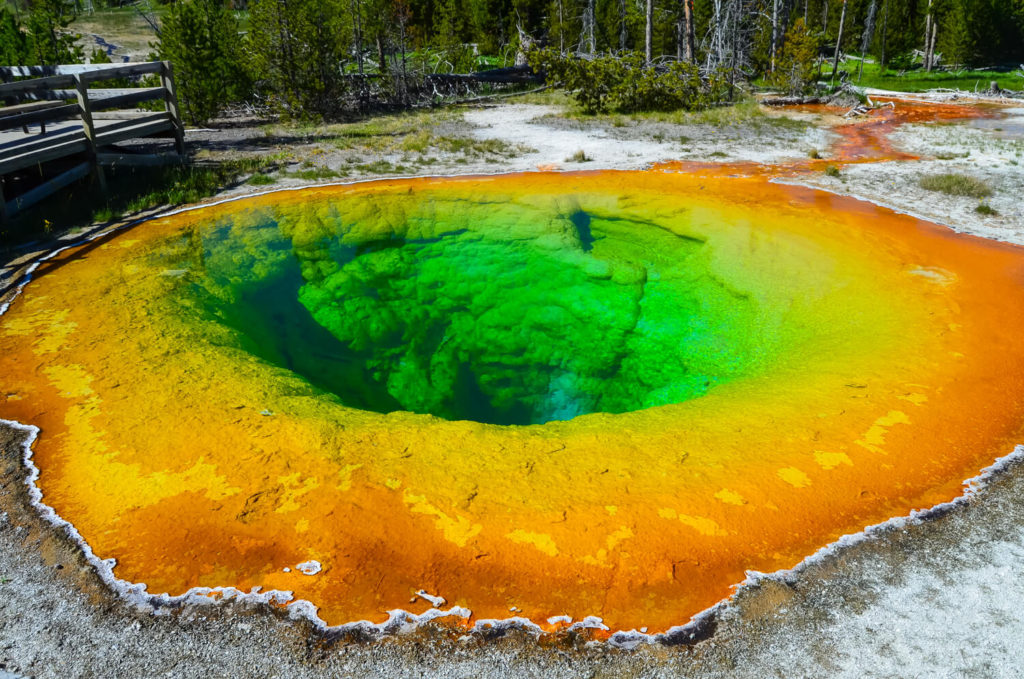
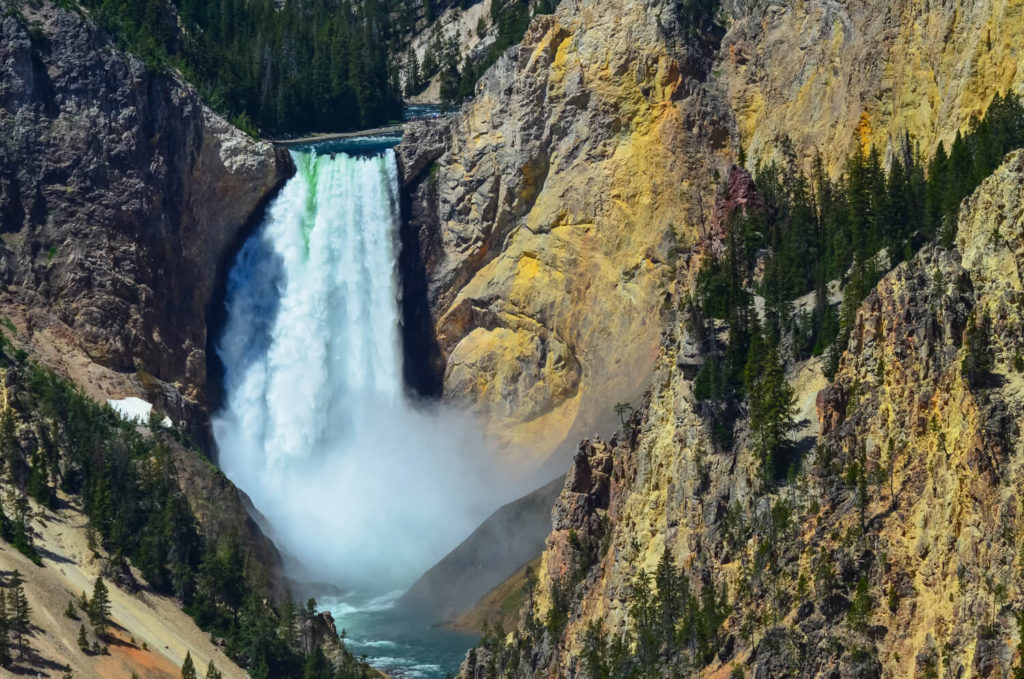
19. Yellowstone National Park
By Adriana at Czech The World
Yellowstone National Park belongs among the most fascinating national parks in the western USA. There is over 60 % of all the world’s geysers and about 10,000 other geothermal features. It’s a true natural wonderland! With an area of nearly 4 000 miles (8 980 km²) of wilderness, it is home to bison herds, bears, coyotes, wolves, deers, and elks.
Yellowstone is full of colorful hot springs, erupting geysers, bubbling mud pots, fumaroles, and steam coming out of the earth. There are simply so many beautiful things to see in Yellowstone National Park, that you should rather plan a longer visit. It is possible to see the best of Yellowstone in 2-3 days, but if you plan some hiking, you can stay for a whole week or more.
The highlights of Yellowstone National Park are the Grand Prismatic – the 3rd largest hot spring in the world, the monumental Grand Canyon of Yellowstone, and the Old Faithful geyser – a predictable geyser, which erupts about every 90 minutes.
Yellowstone is is a great base for backcountry hiking and camping – there are more than 900 miles of hiking trails! Just remember that you are in the bear country so always follow bear-safety rules!
The park offers accommodation for all kinds of travelers whether you prefer camping or staying in lodges, the most fascinating place where to stay is the Old Faithful Inn. If you want to eat something special, definitely try the bison burger at the Snow Lodge in Old Faithful village! The closest town where to stay outside of the park is West Yellowstone.
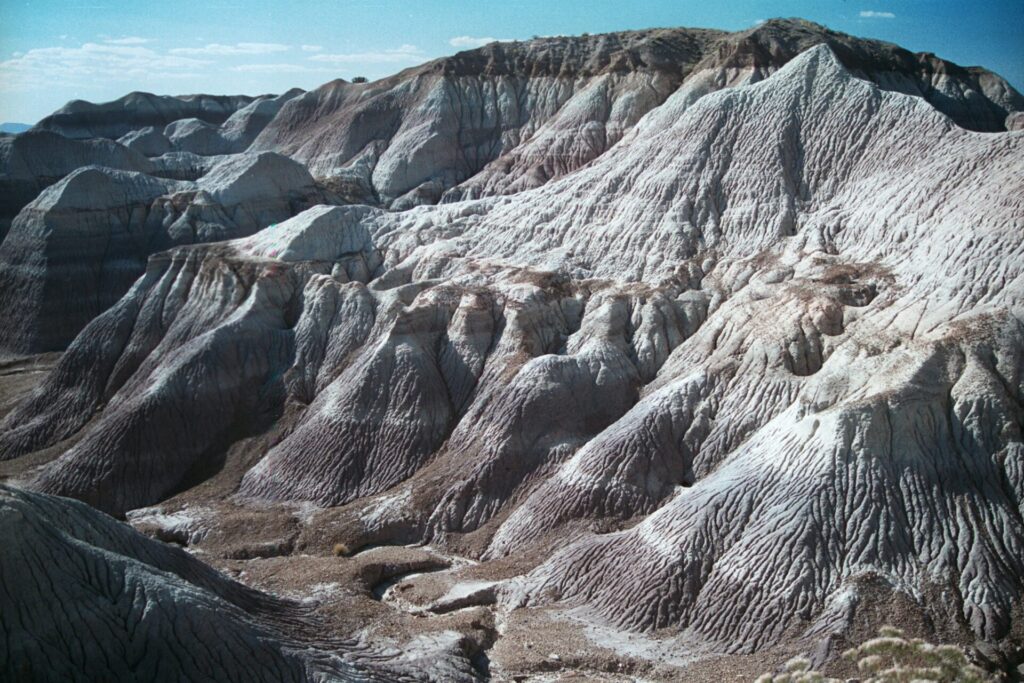
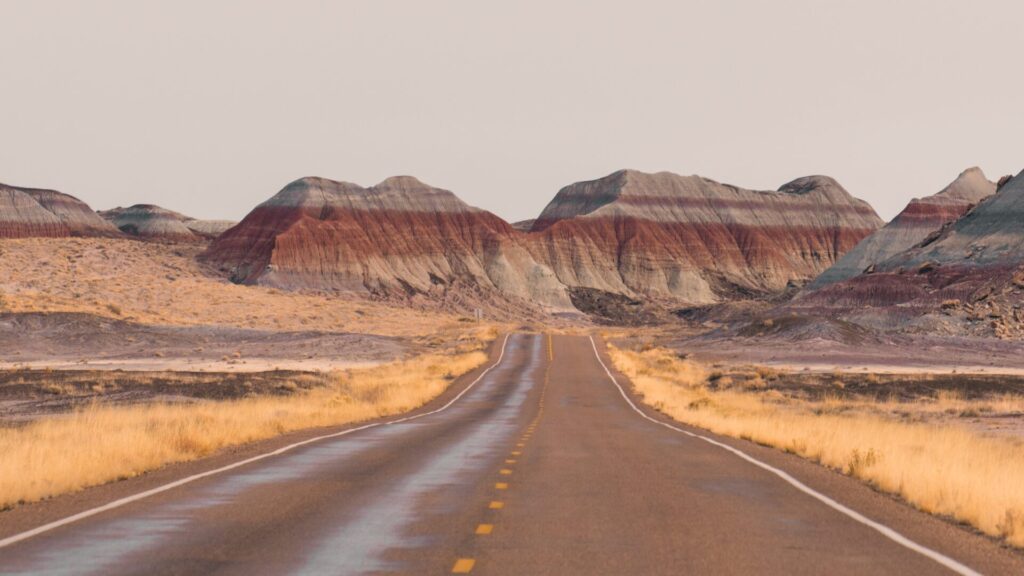
20. Petrified National Park
By Ale at Sea Salt and Fog
Petrified Forest National Park is one of Arizona’s hidden gems. Located in northern Arizona near the New Mexico border, the park is made up of colorful landscapes and ancient wood.
The park is named and known for the ancient, petrified wood that calls the park home. While the landscape now reflects a desert environment, millions of years ago an ancient forest thrived here. Nowadays, you’ll find large tree trunks turned on their sides, seemingly perfectly cut in pieces and preserved in beautiful crystal-like formations.
One of the main highlights of Petrified Forest is seeing the petrified wood. Easy trails with plenty of petrified wood include the Giant Logs (0.4-mile loop) and the Crystal Forest (0.75-mile loop) trails. Both of these are easy strolls with plenty of opportunities to see and photograph petrified logs.
Additional things to do in the park include the Puerco Pueblo trail, an easy quarter-mile walk that takes you through Native American ruins and petroglyphs.
To experience the varies landscape in the park, there’s two spots you can’t miss: the Blue Mesa and the Painted Desert. The Blue Mesa area is made up of colorful badlands, with pretty bands of orange, purples and blues. Here, the Blue Mesa trail is a one-mile loop that take you directly through the badlands – it’s stunning.
Similarly, the Painted Desert area of the park is colorful – hues of oranges and reds dominate the landscape. The Painted Desert Rim trail is a quick way to take in the stunning views.
When visiting the Petrified Forest, plan to stay in Holbrook, Arizona. The town is small, but cute and quirky. Hotels here are far from luxury, but the Days Inn offers clean rooms and affordable prices. For breakfast, stop at Aliberto’s and pick up burritos – you won’t be disappointed!

